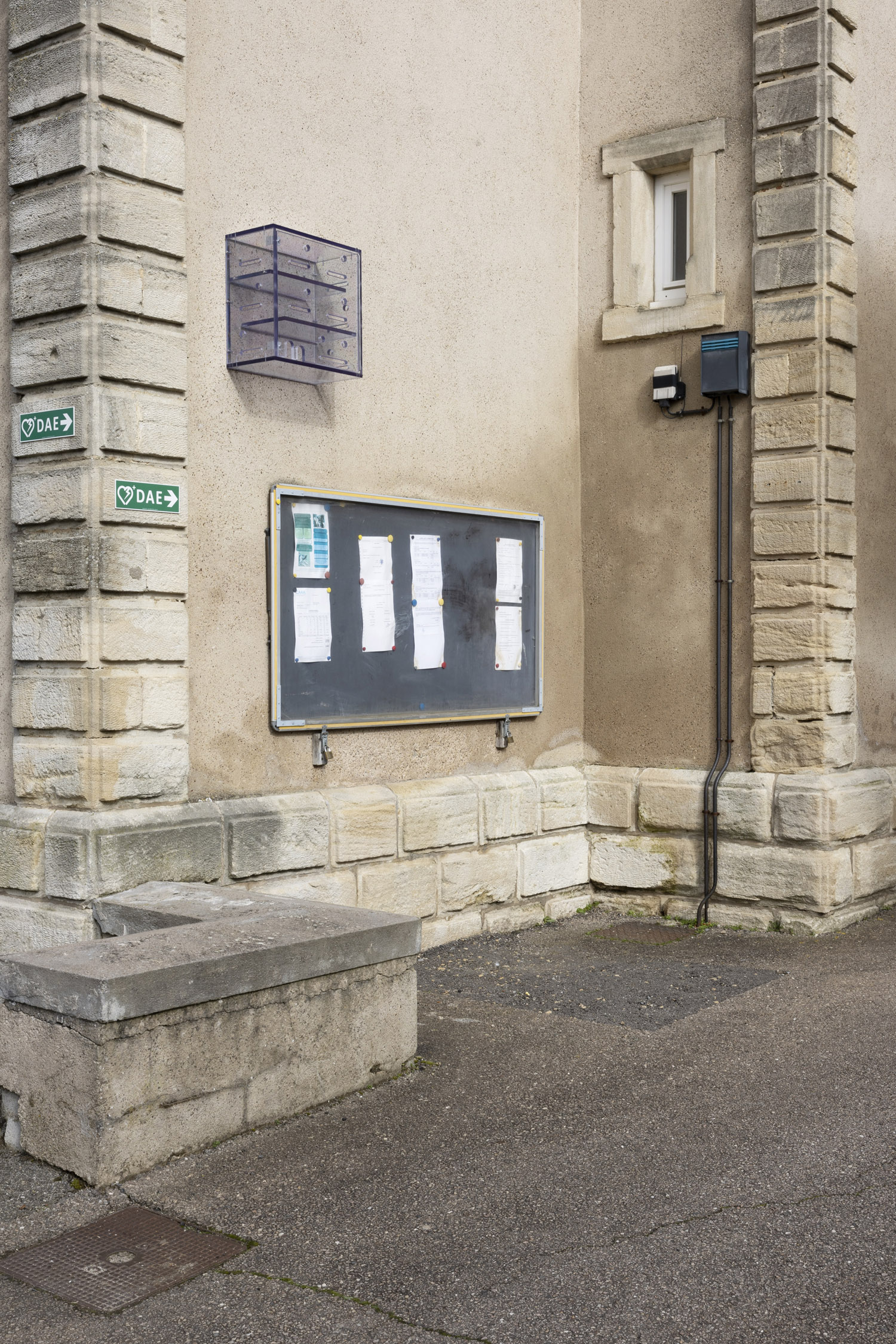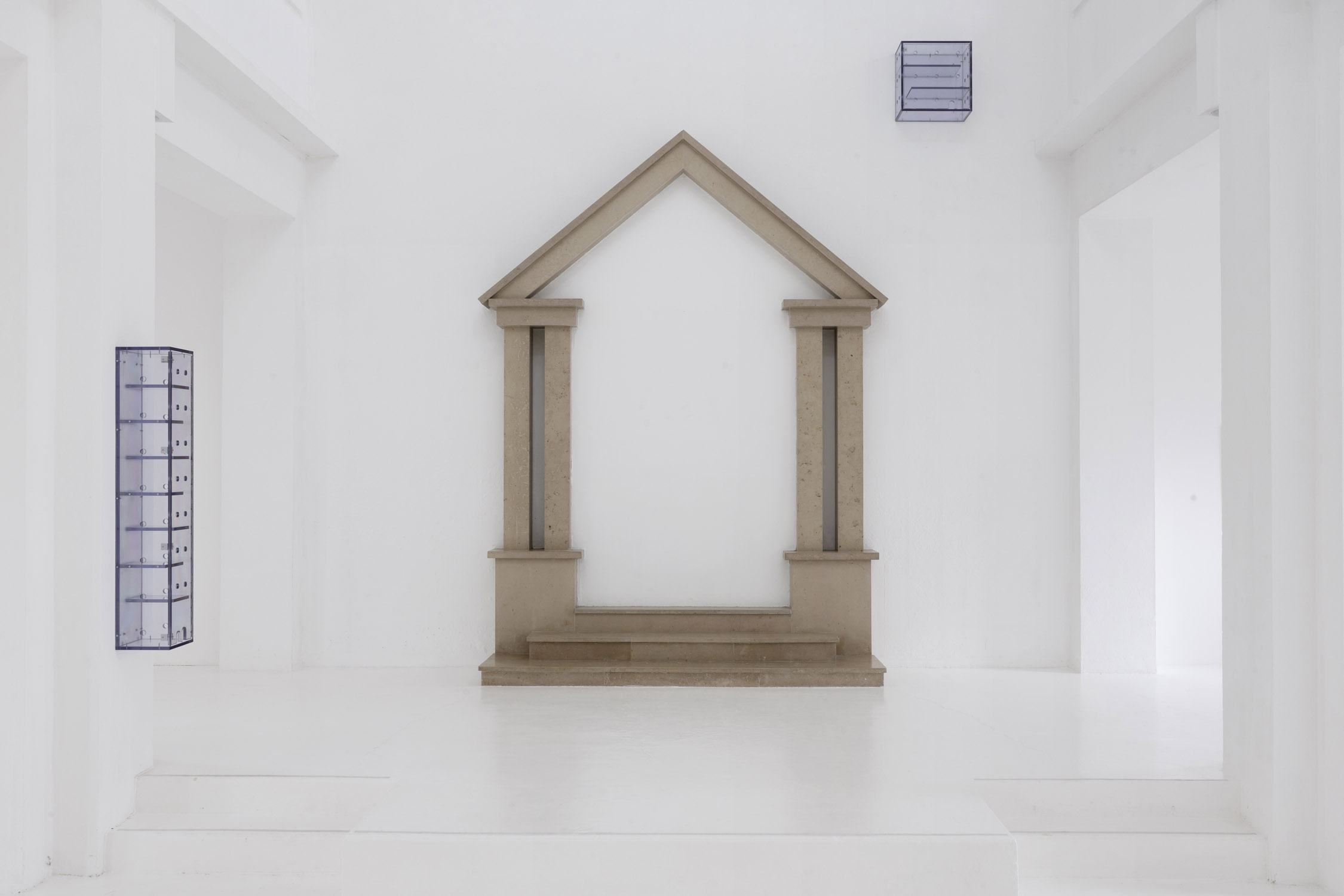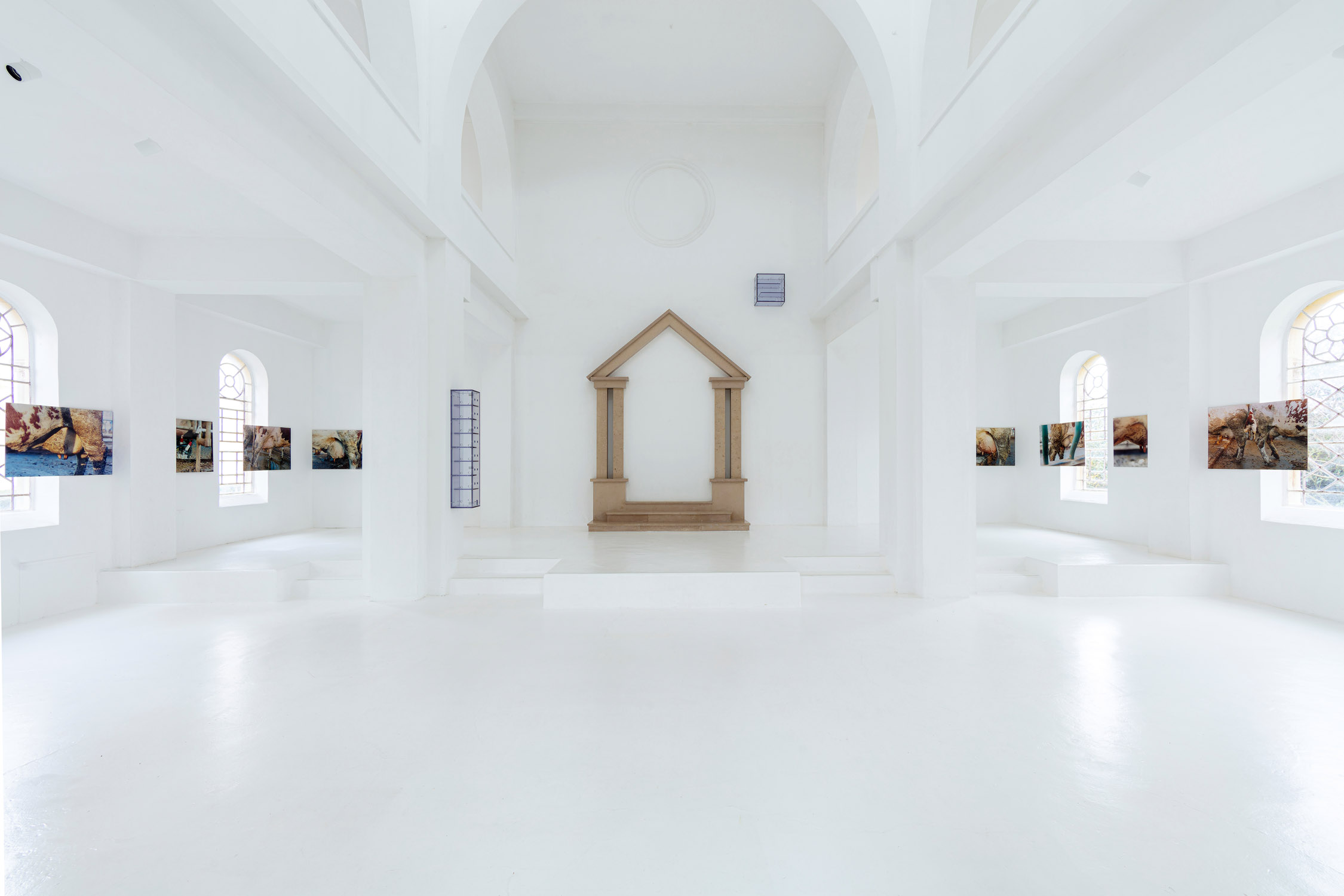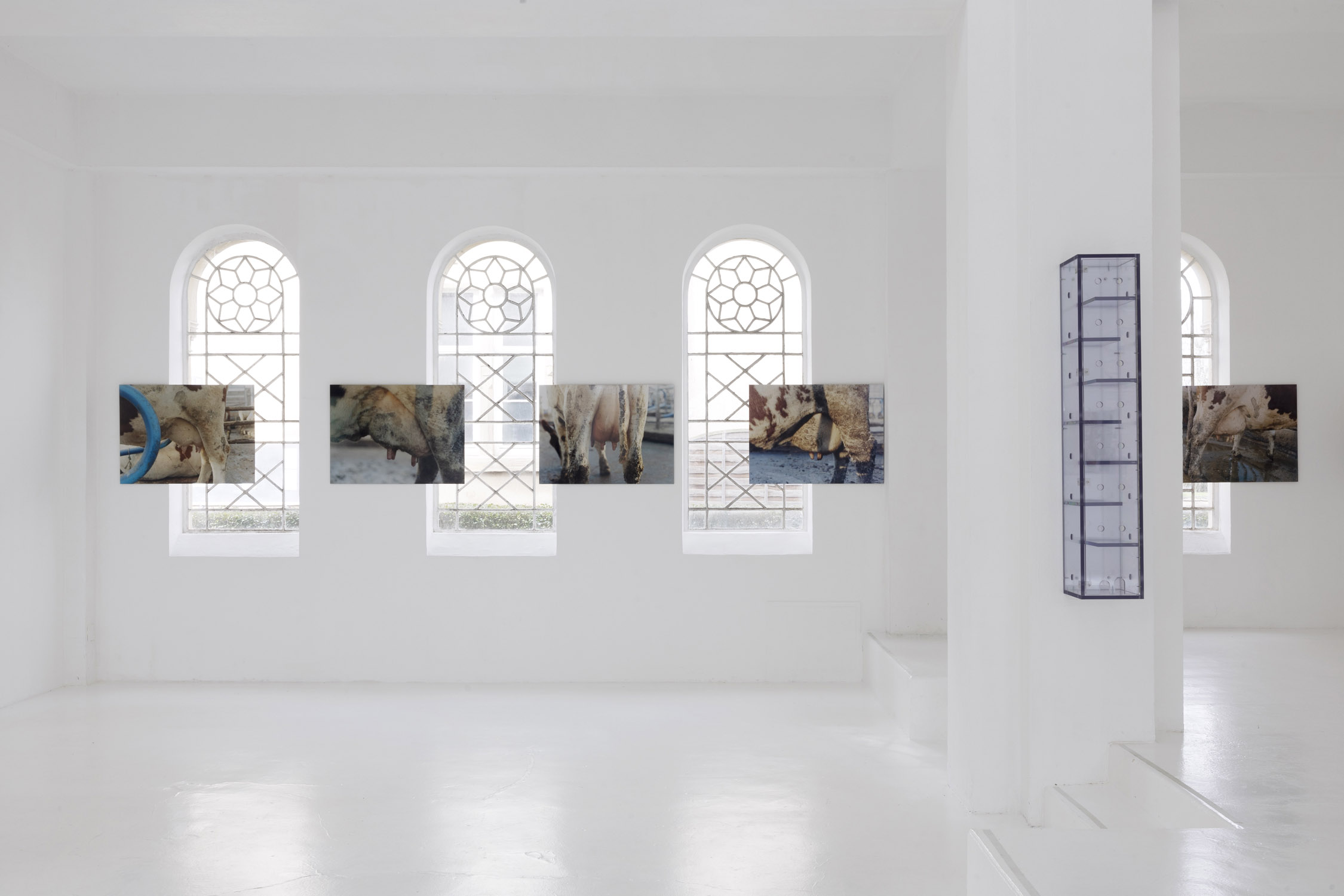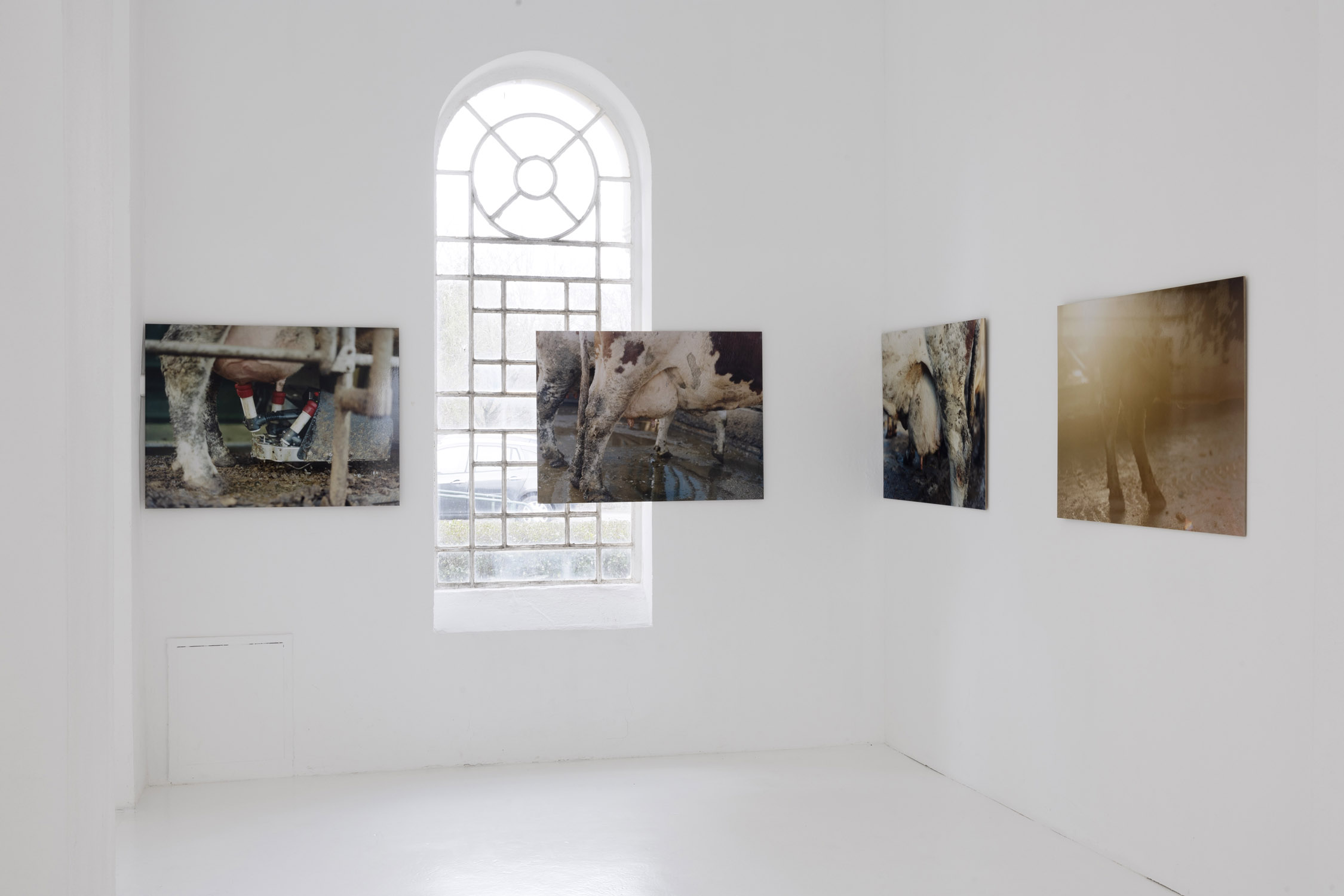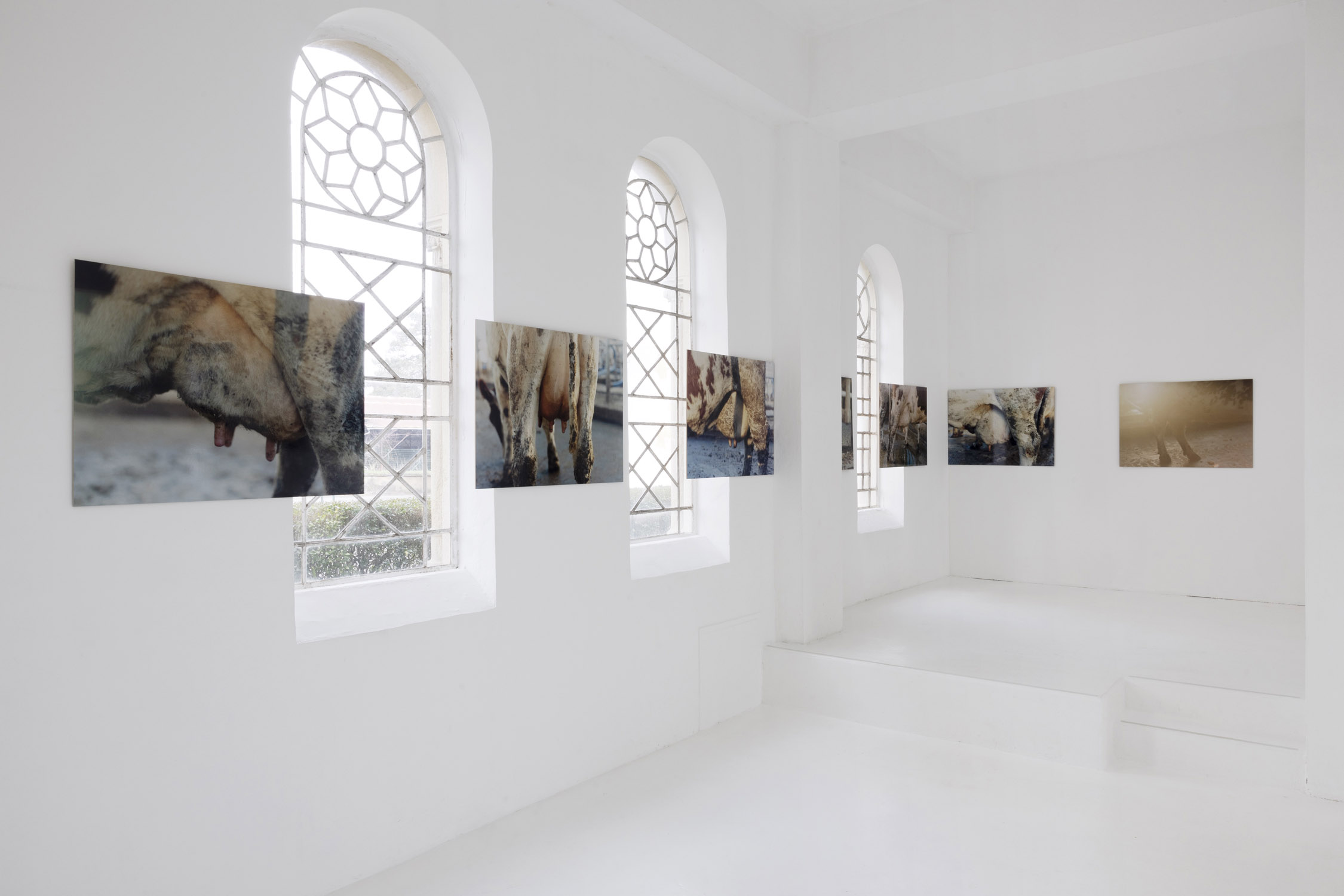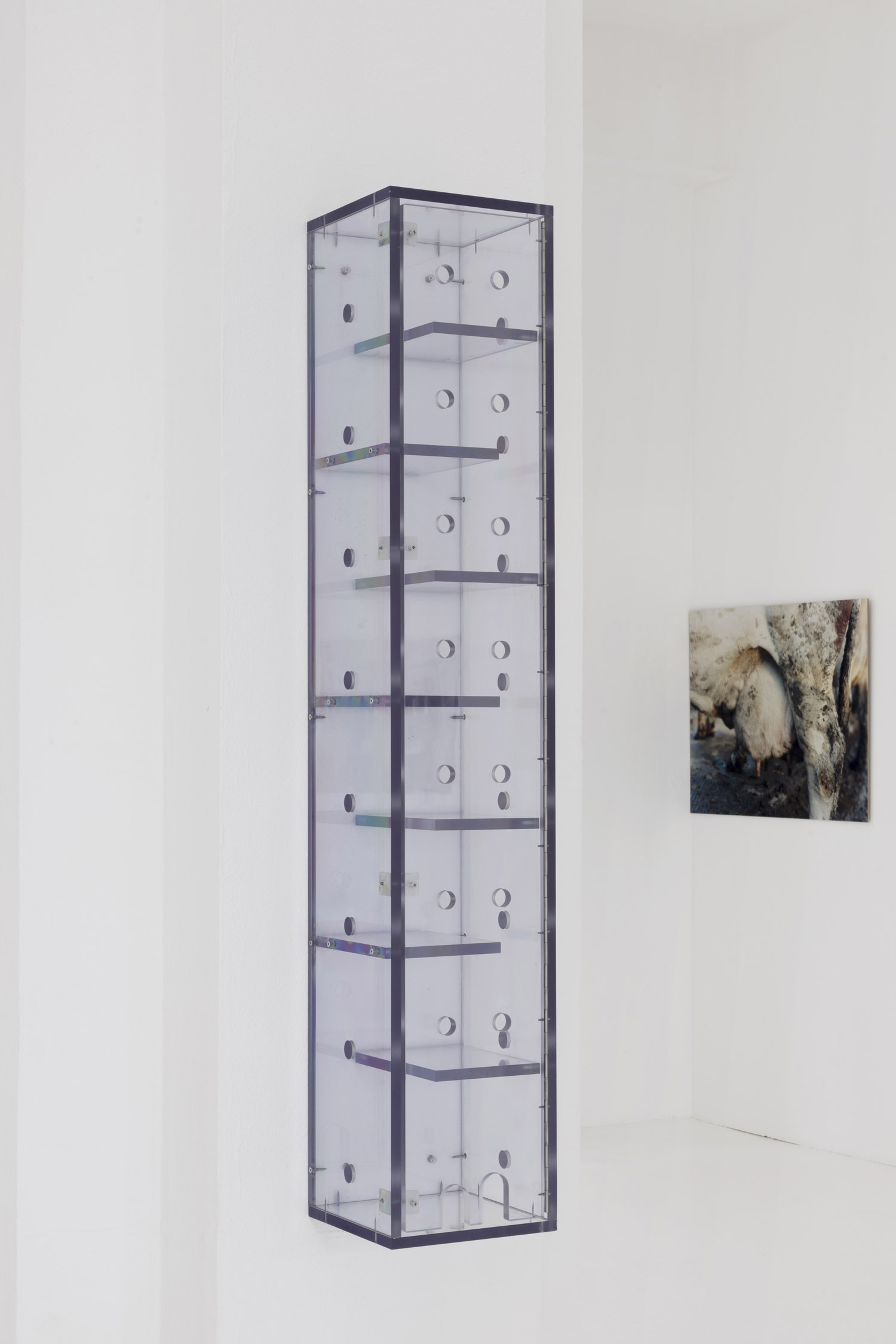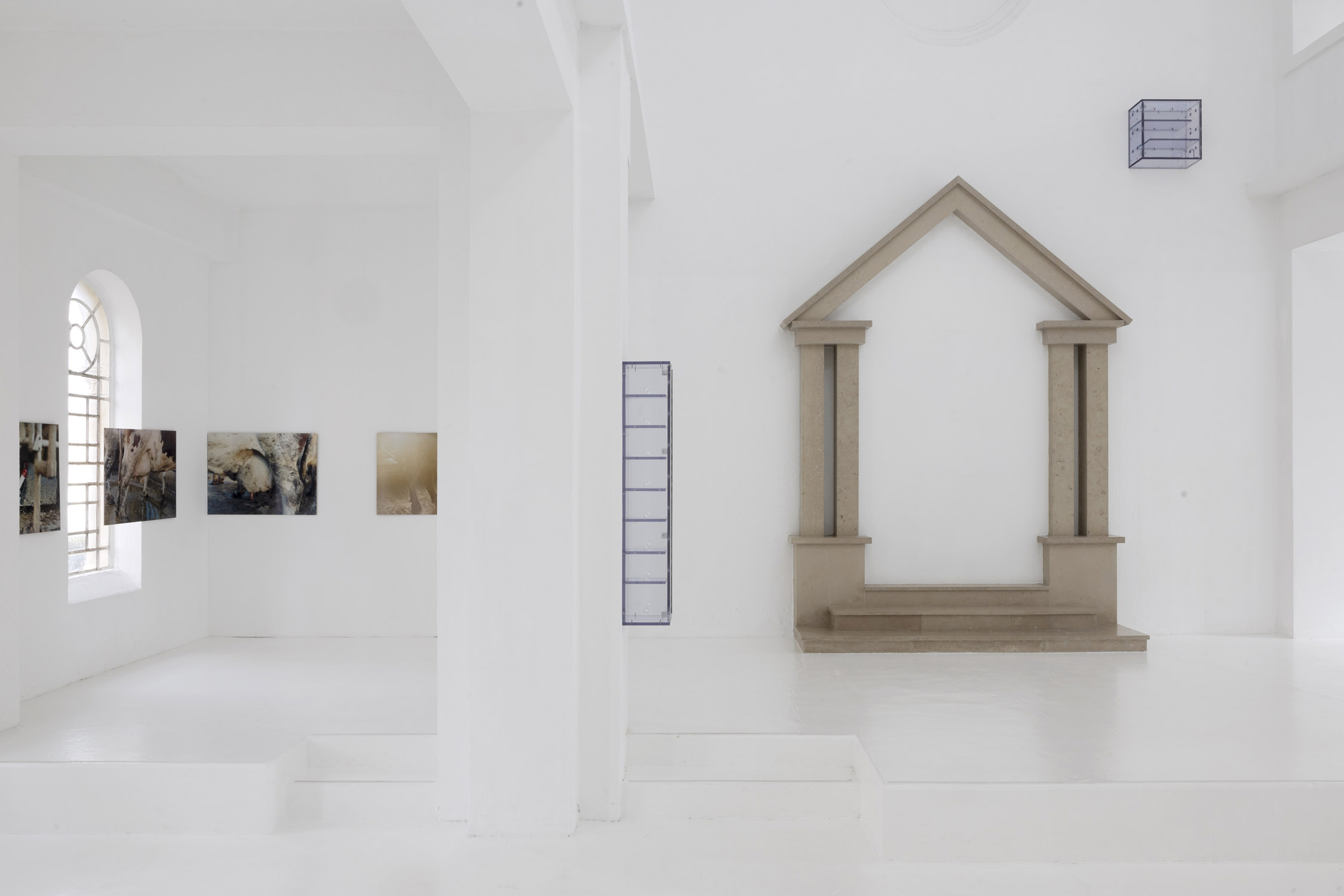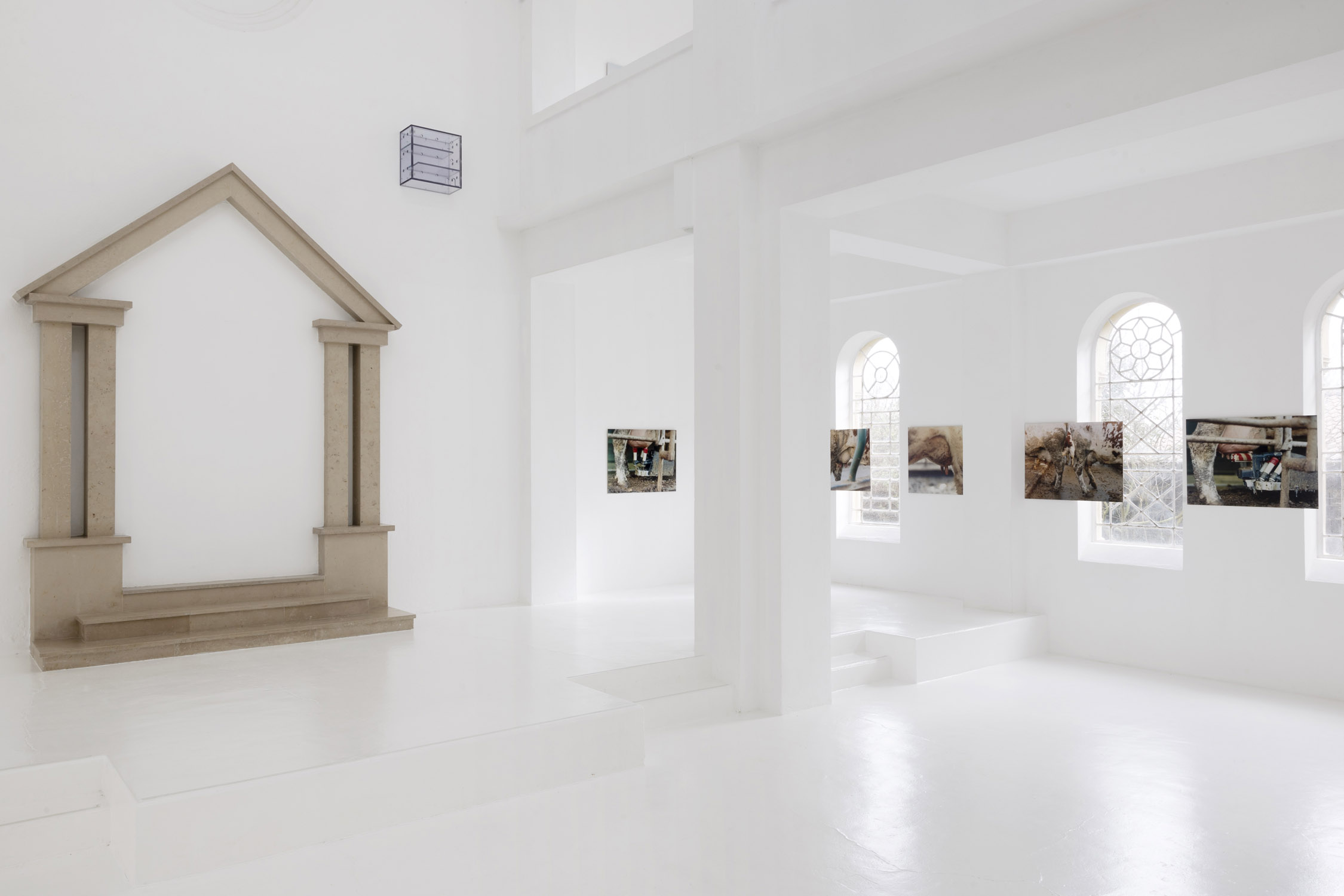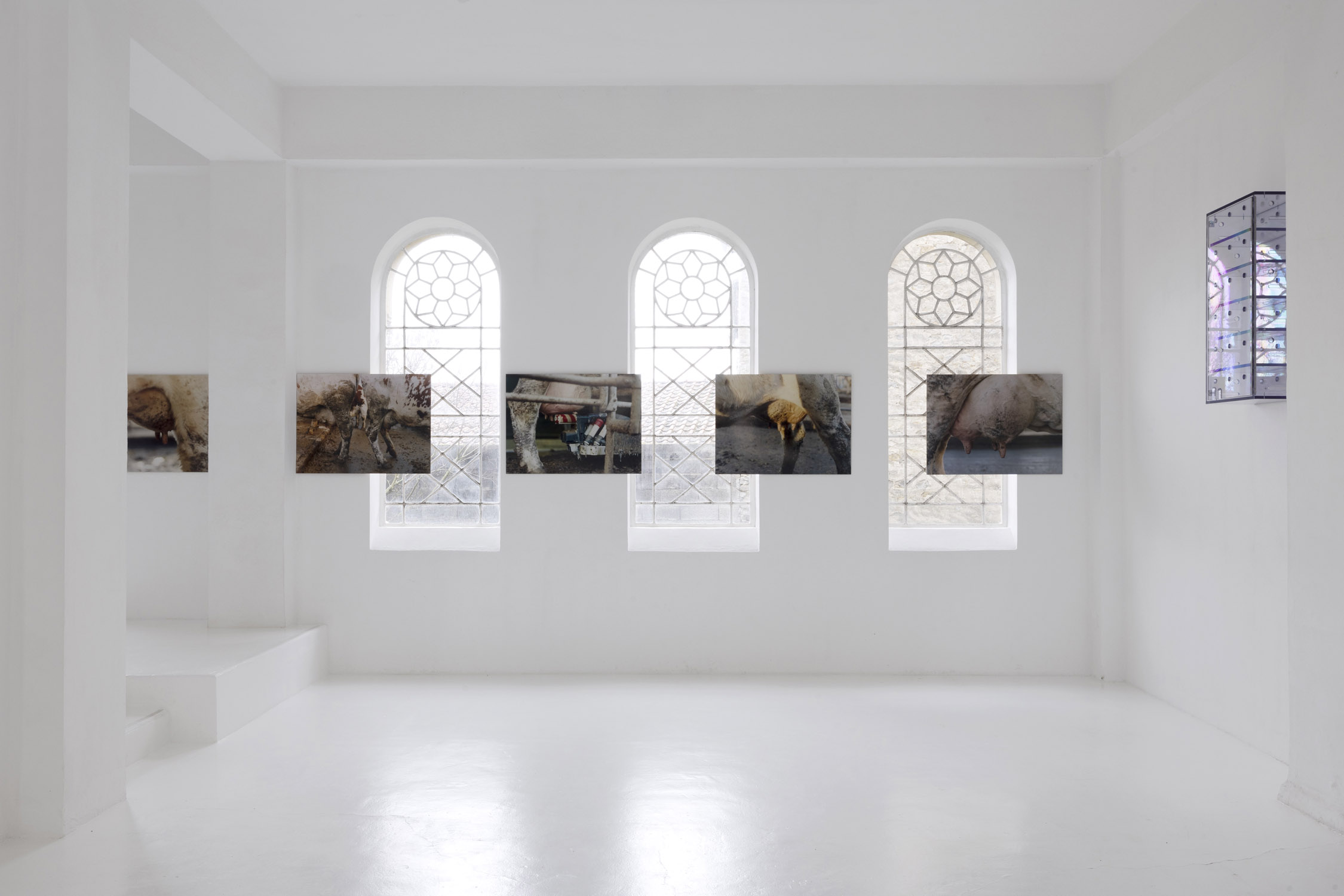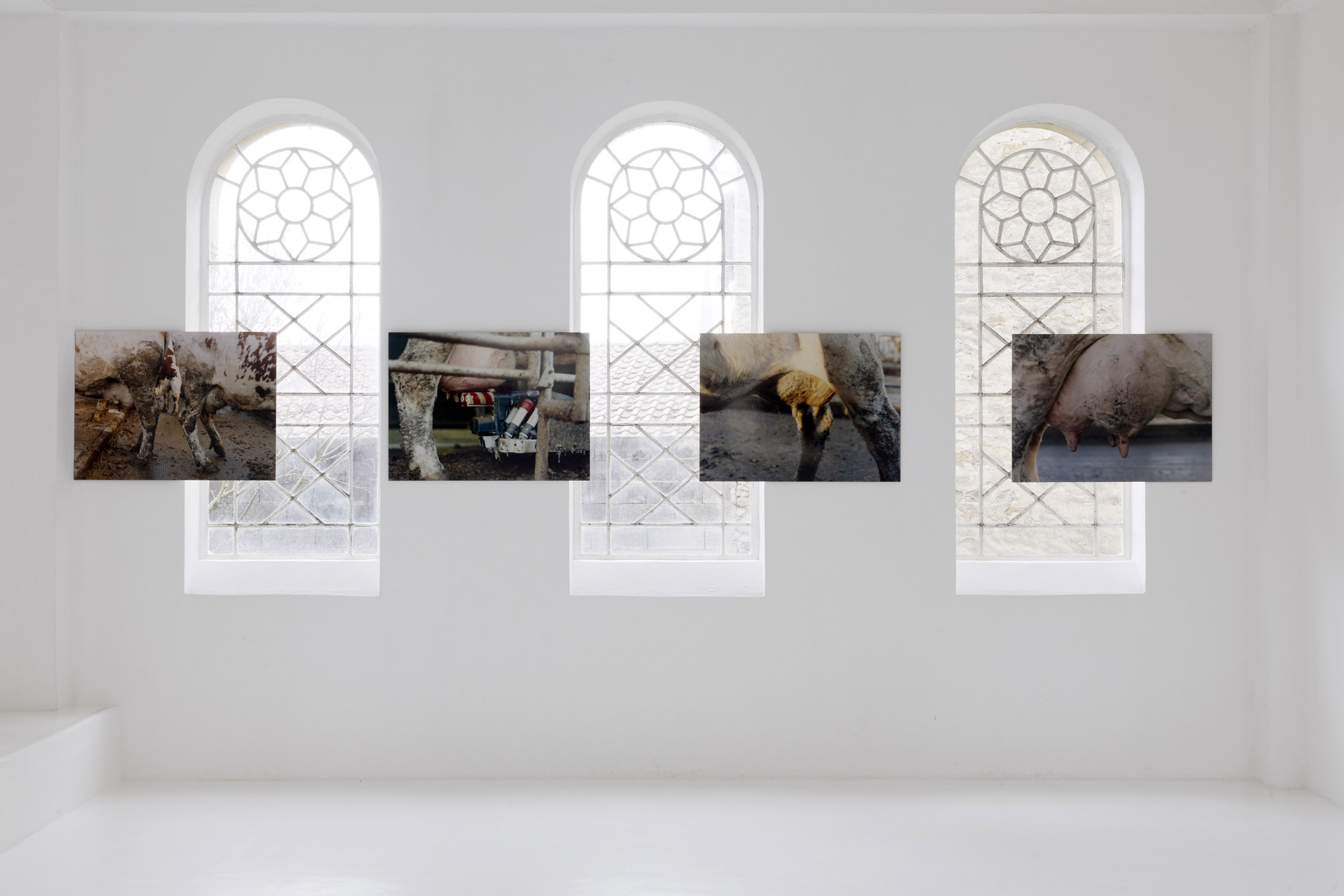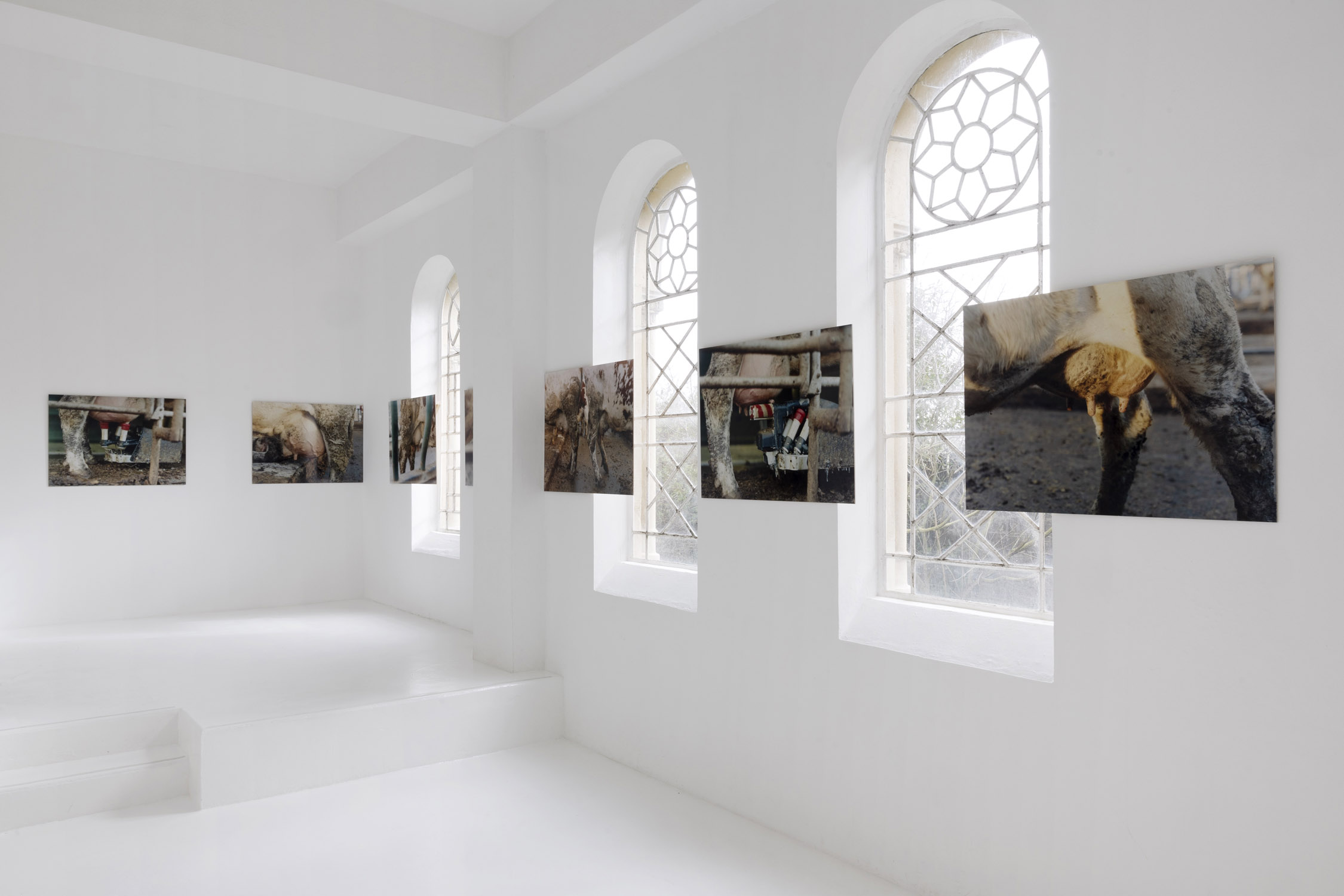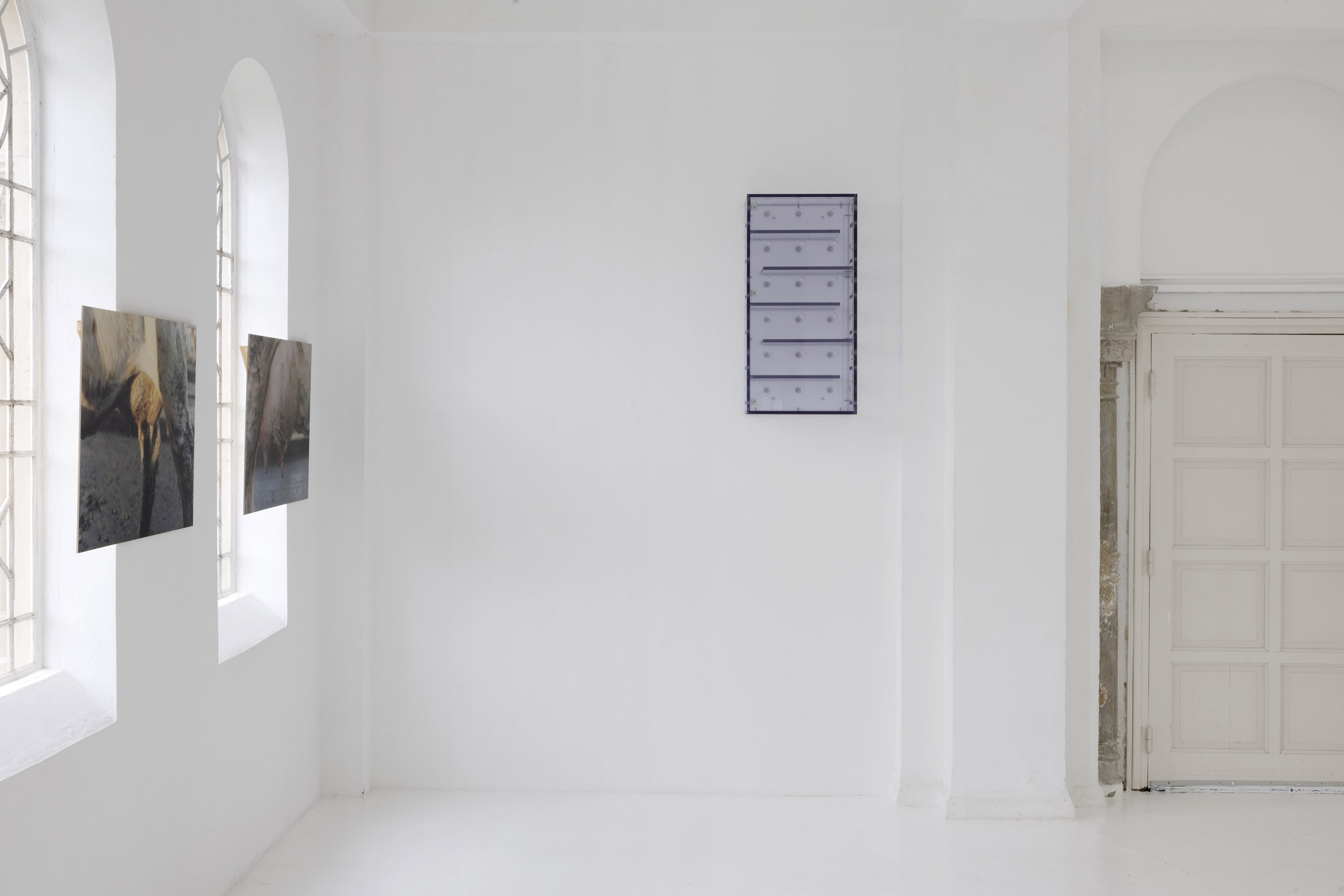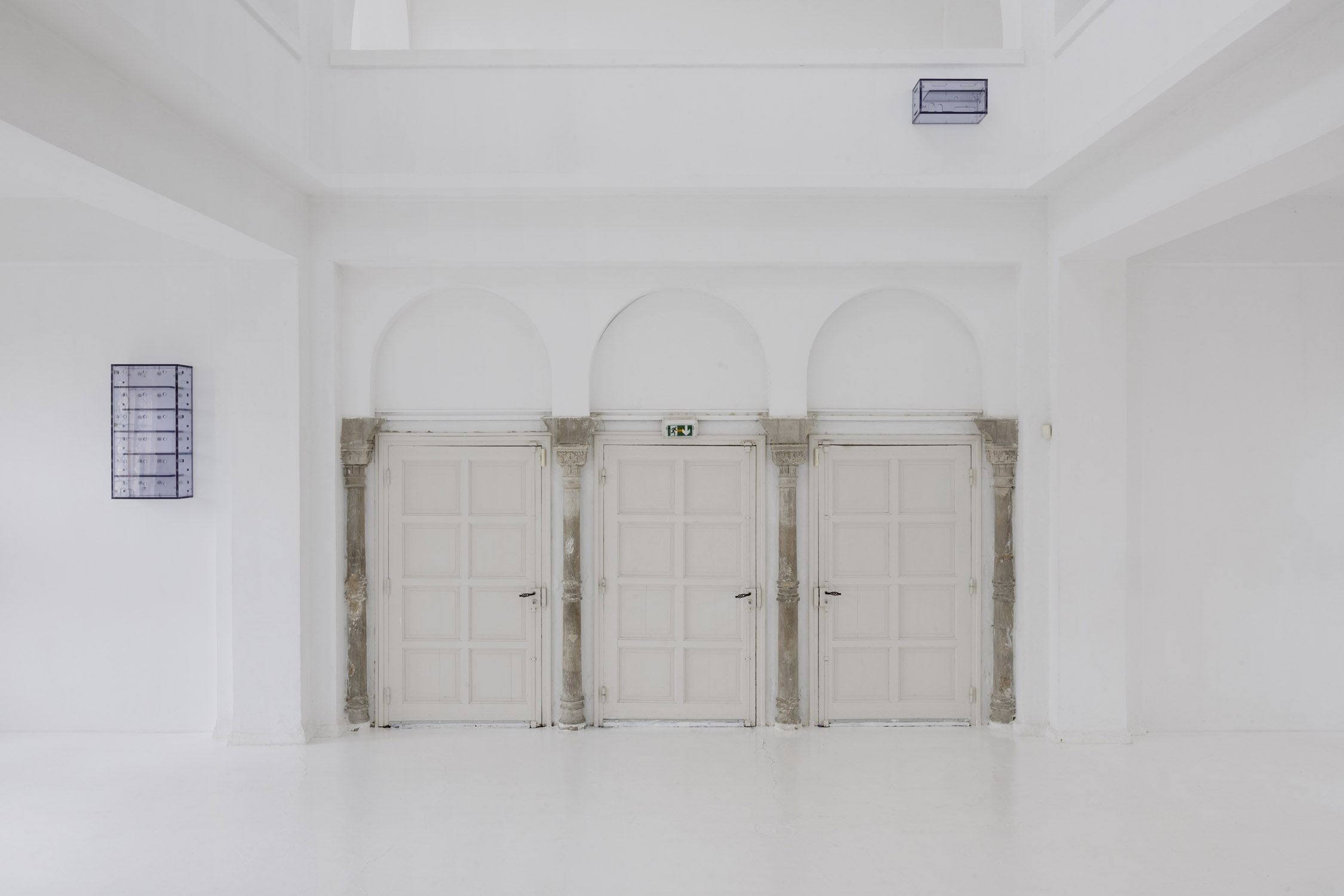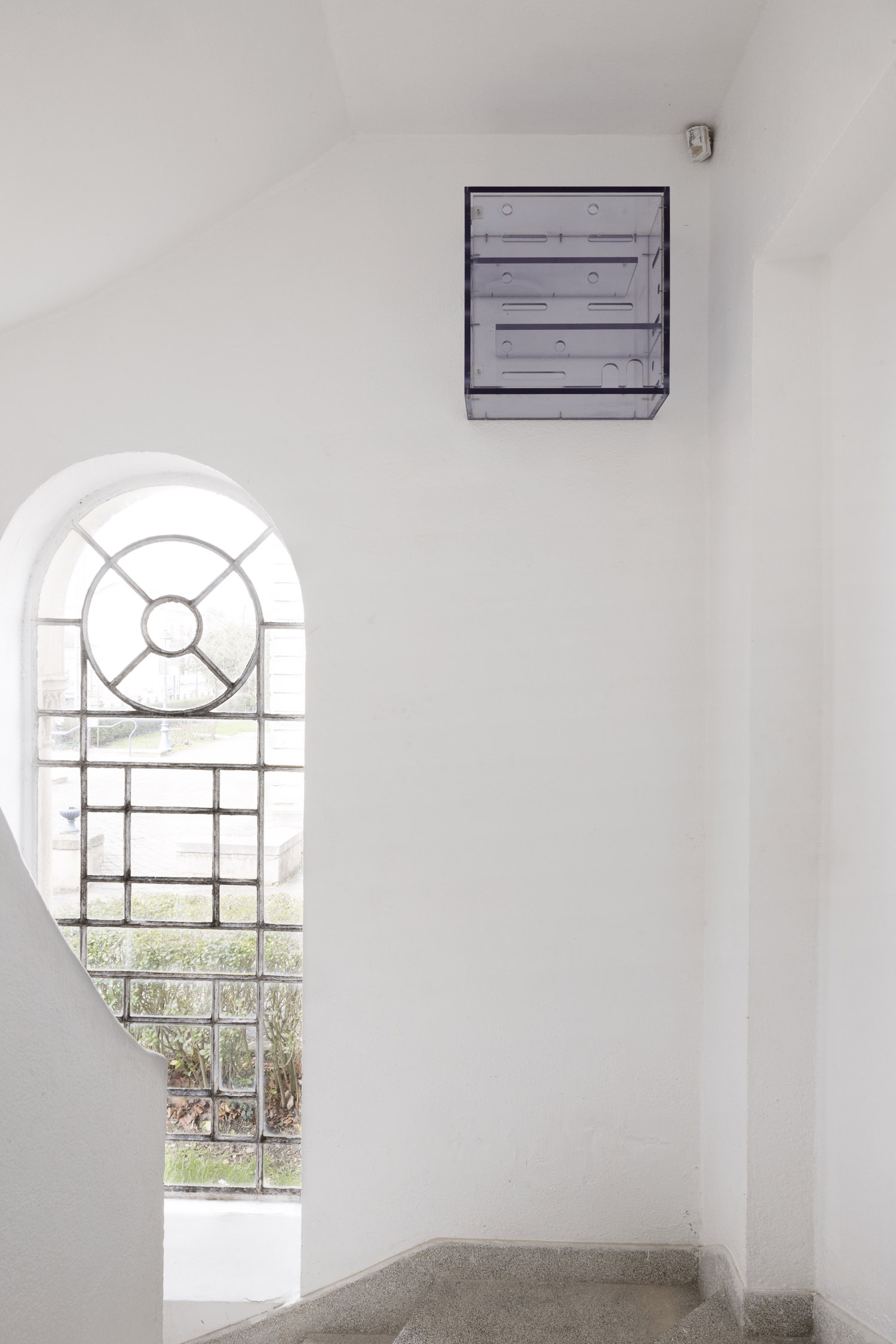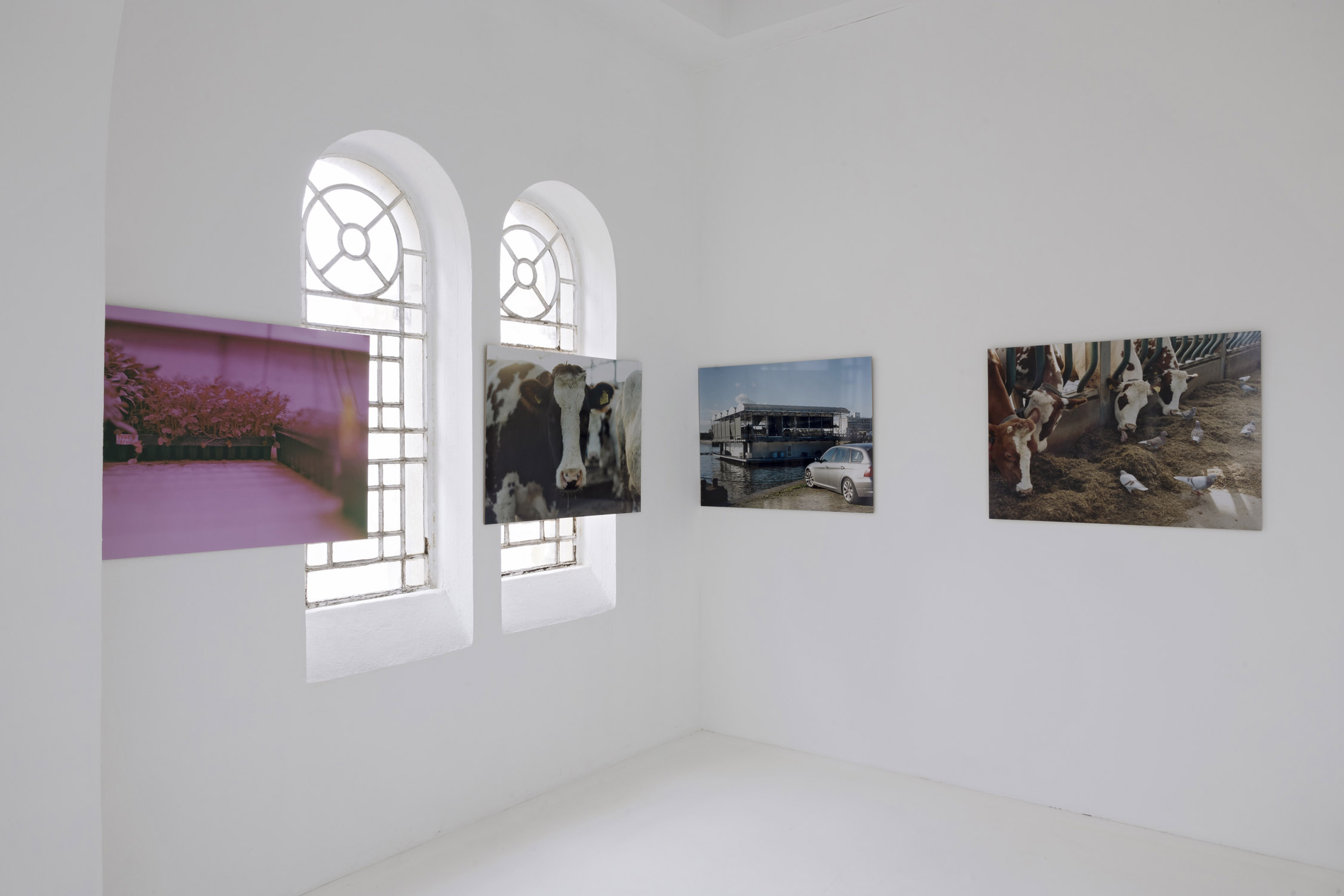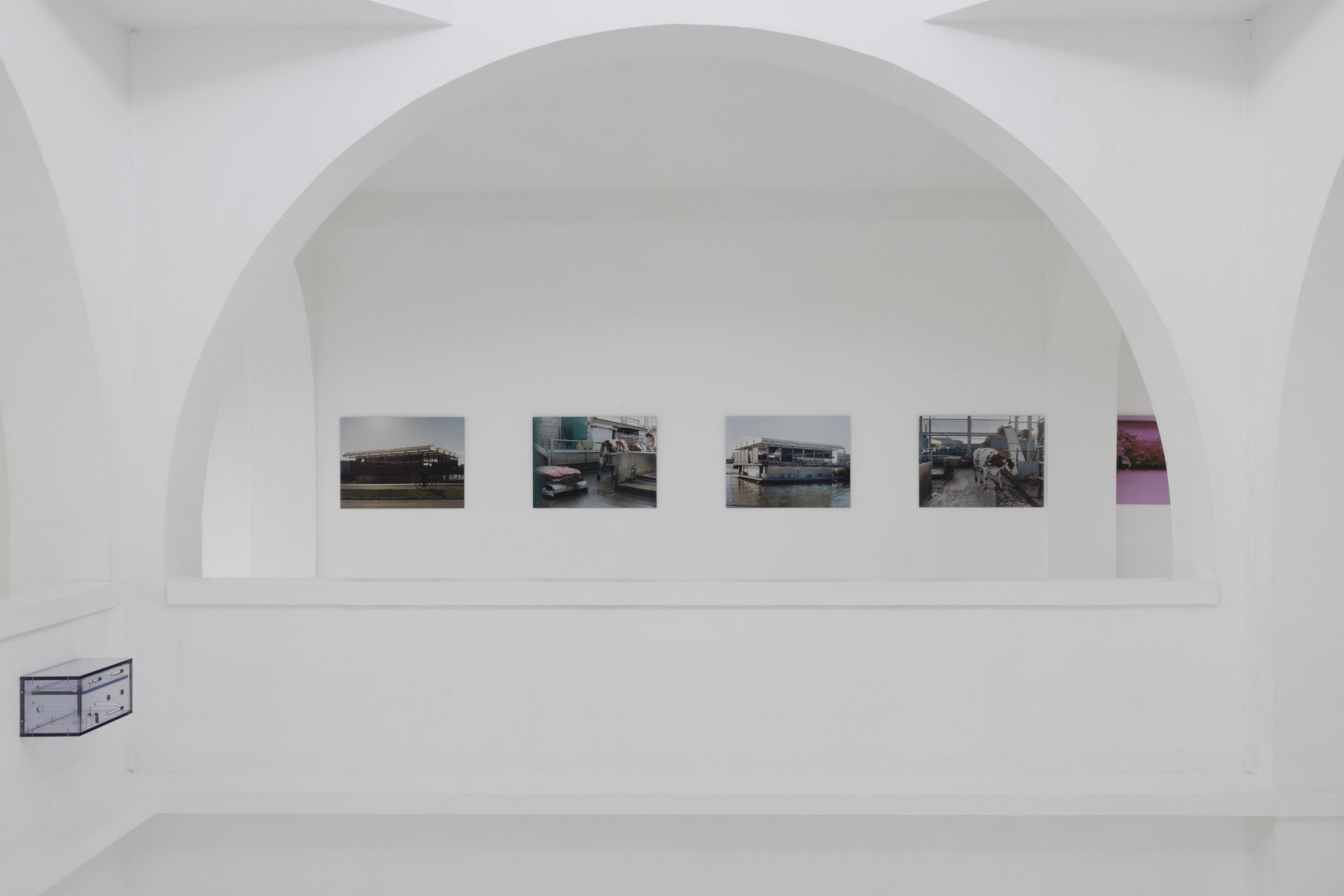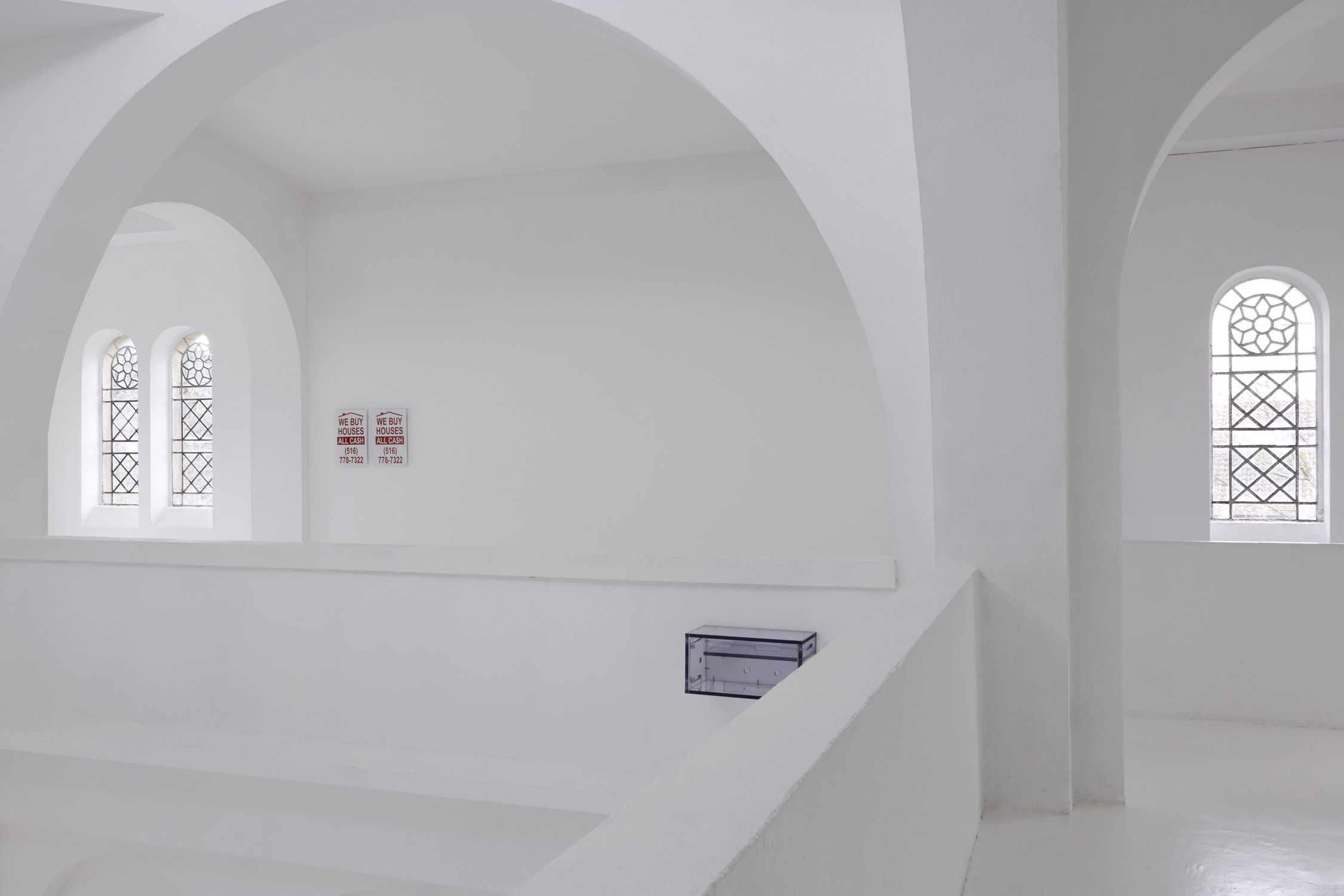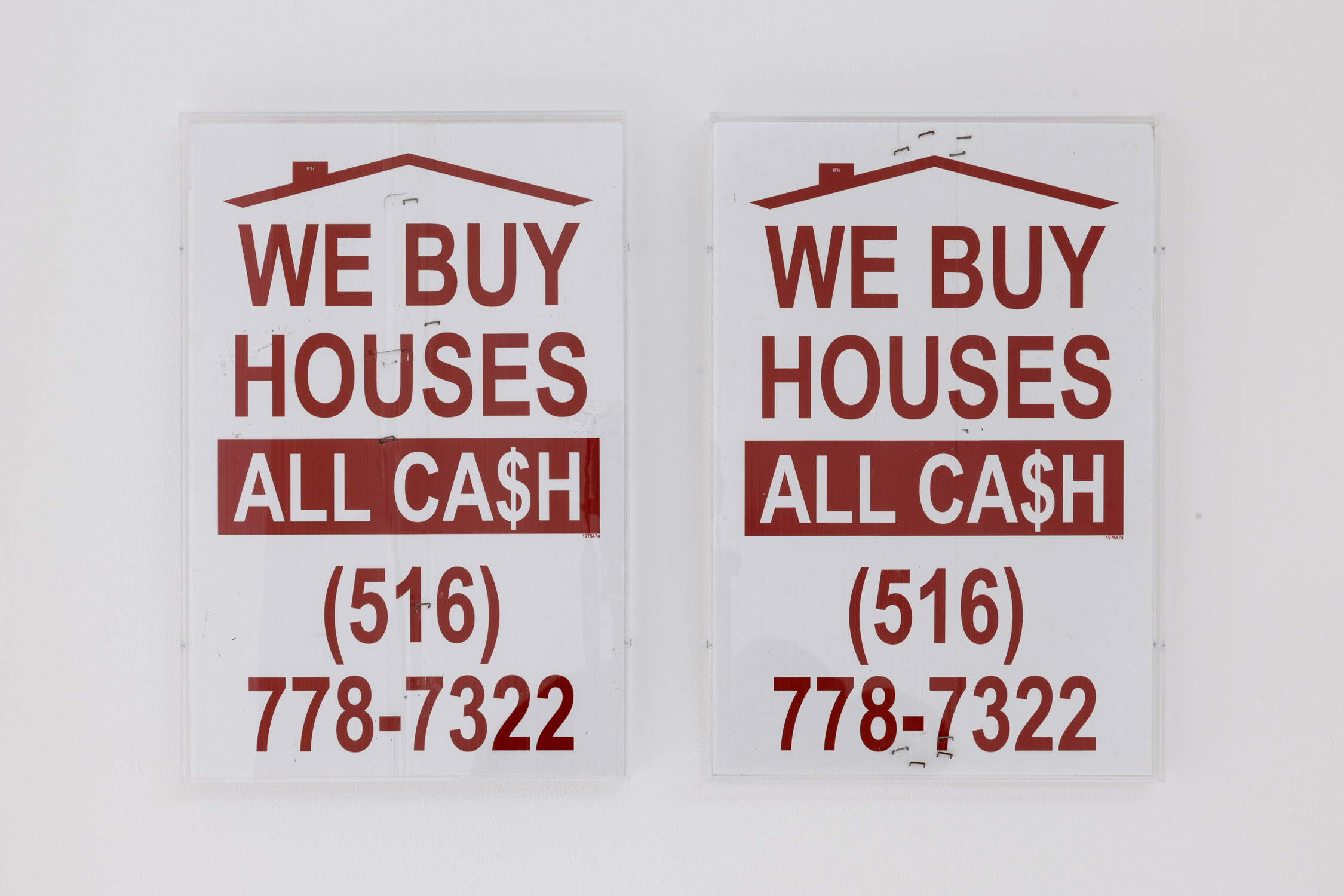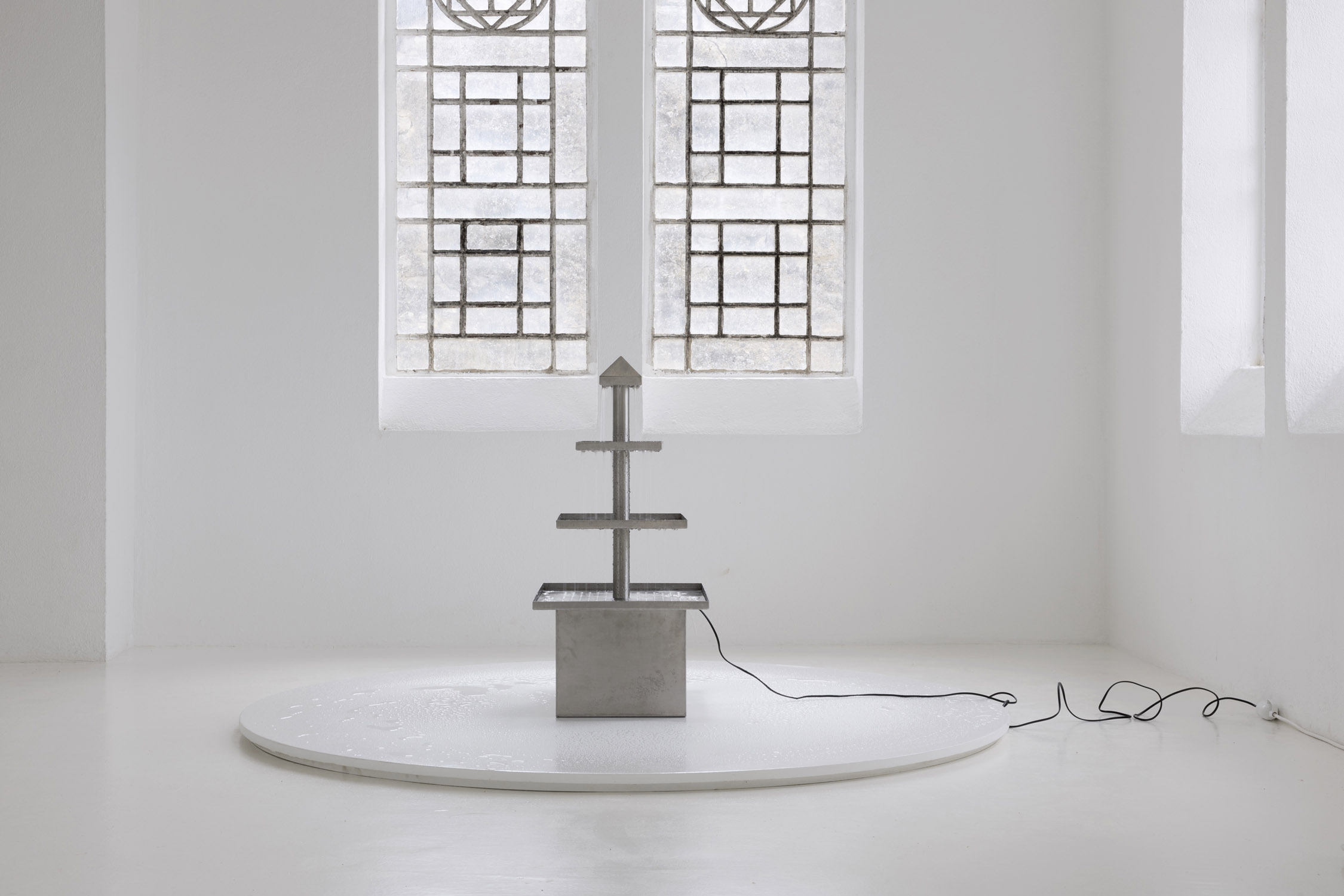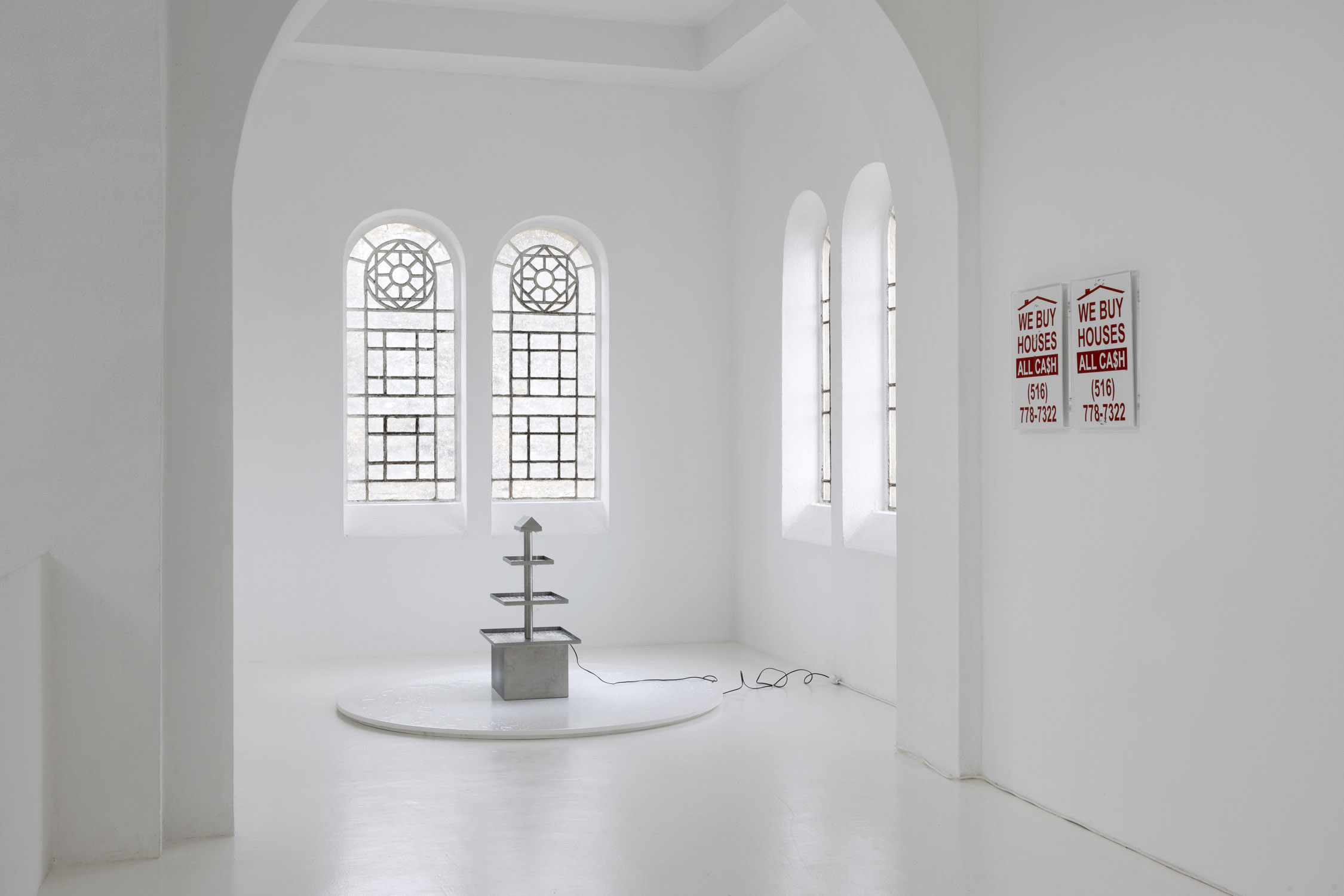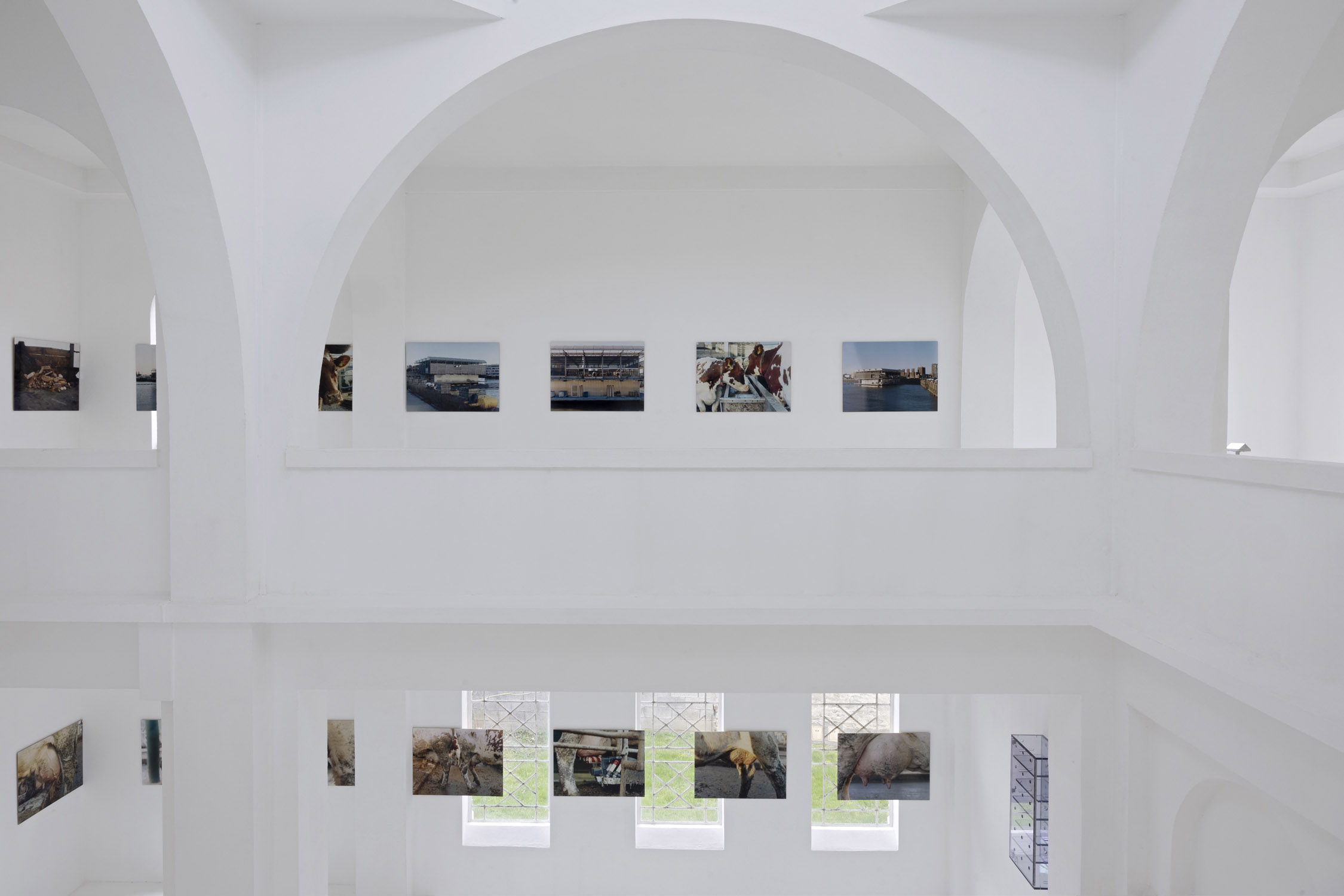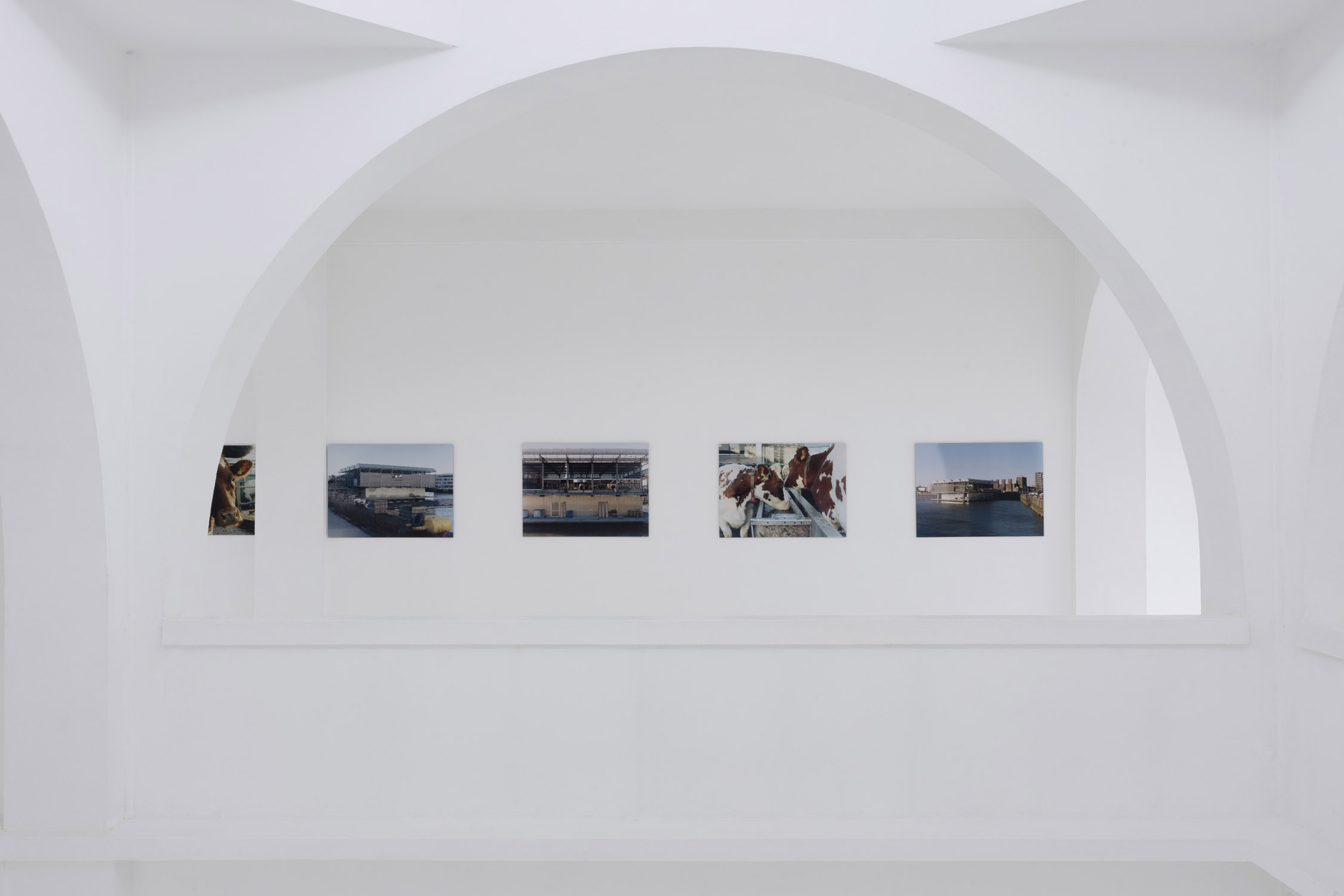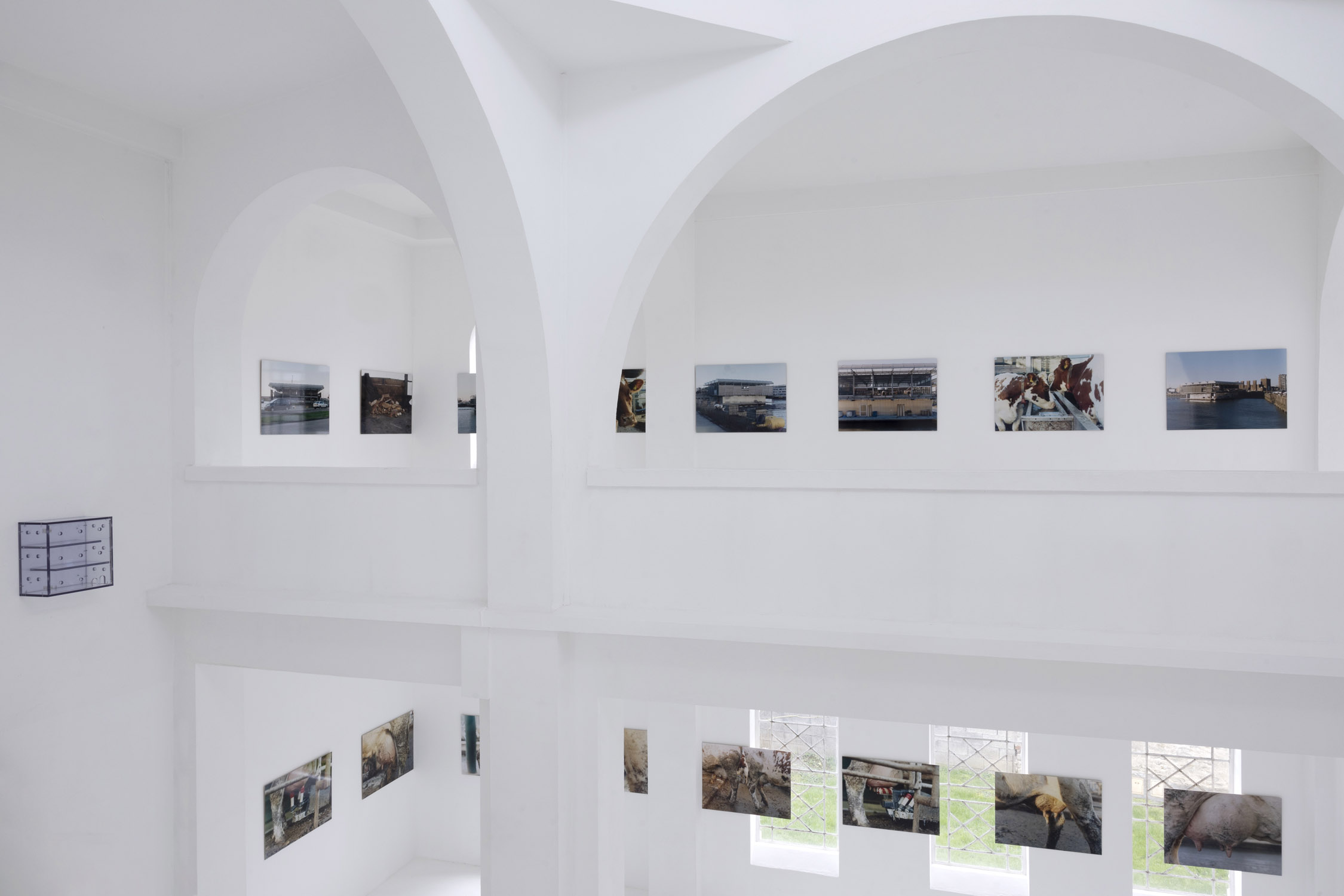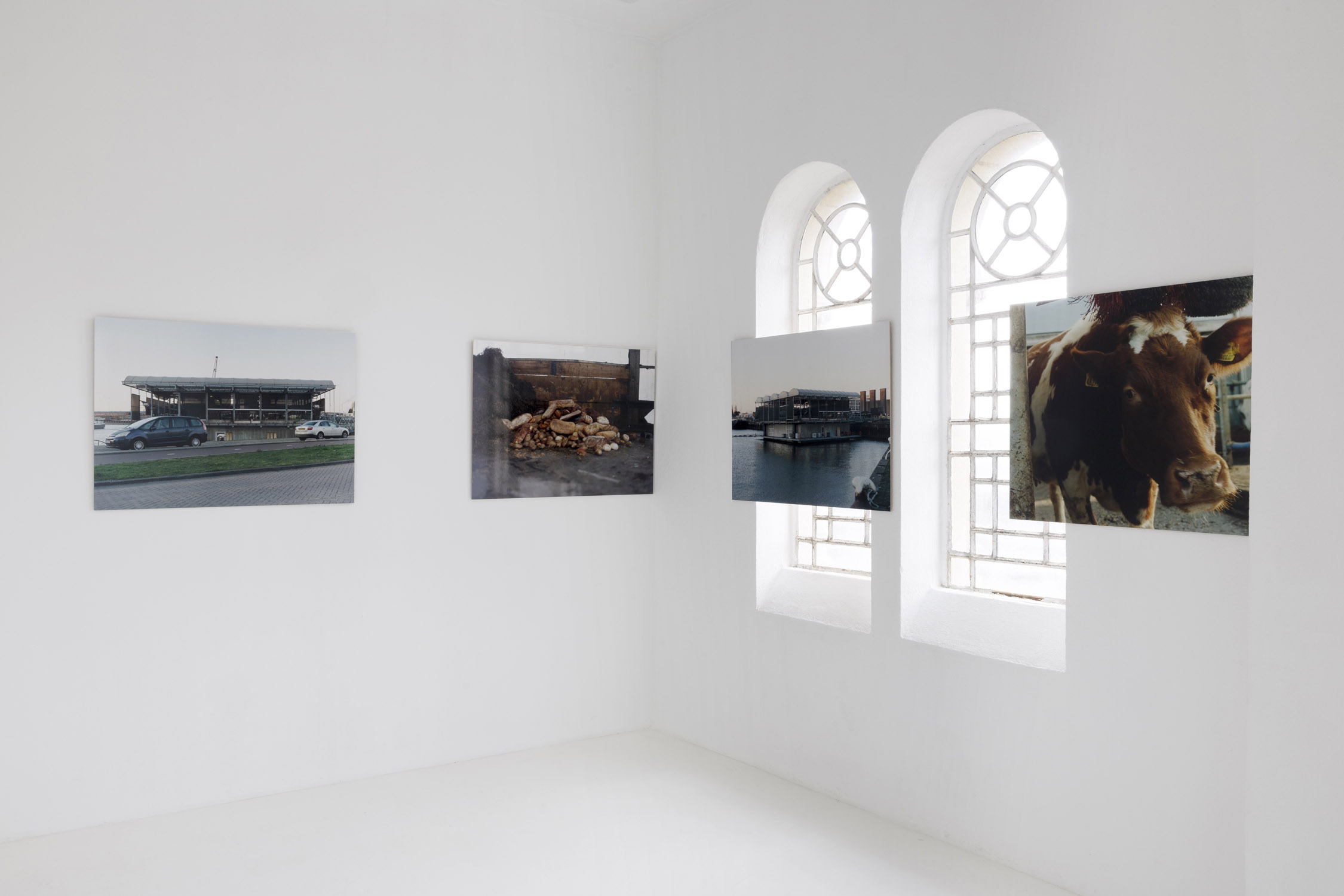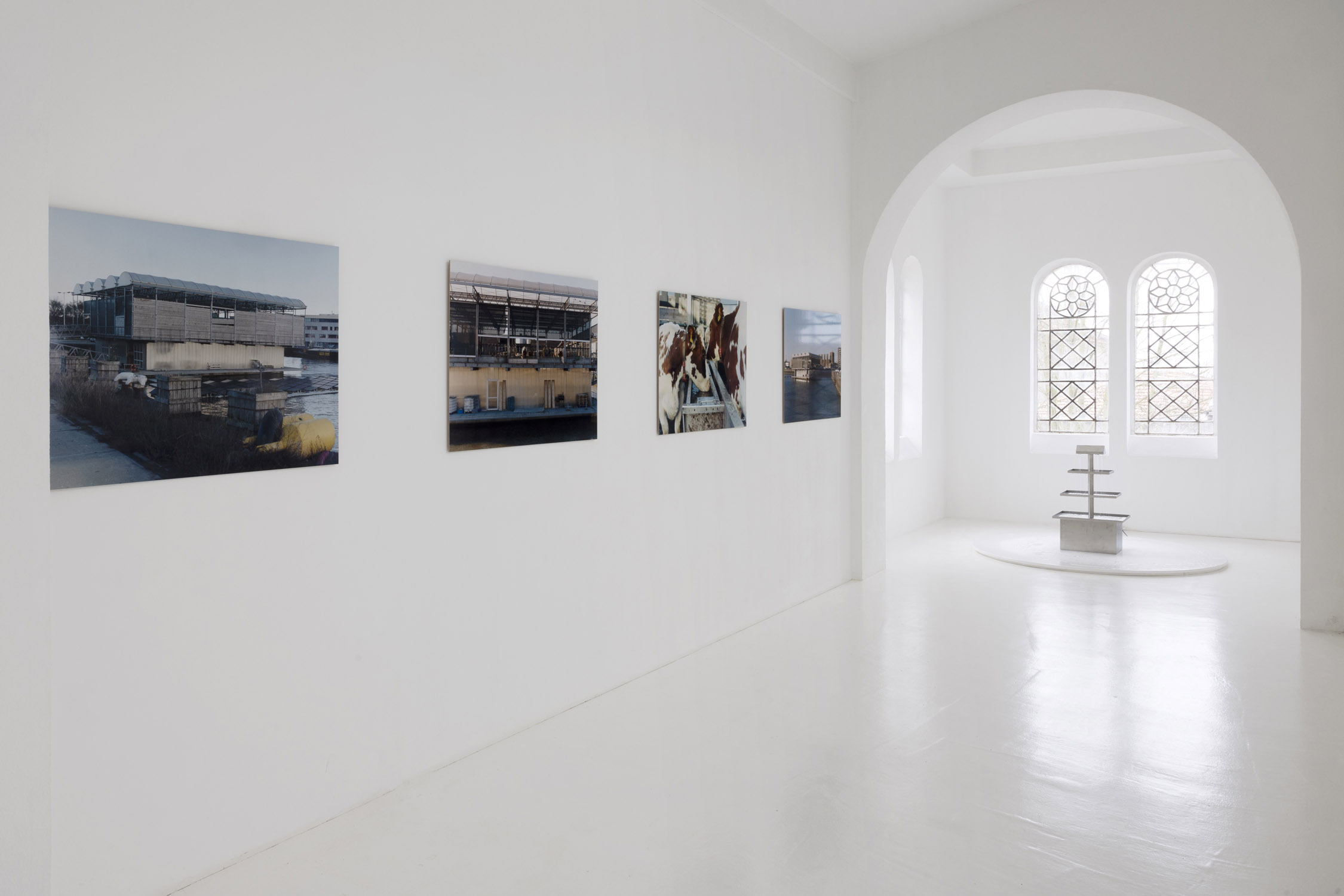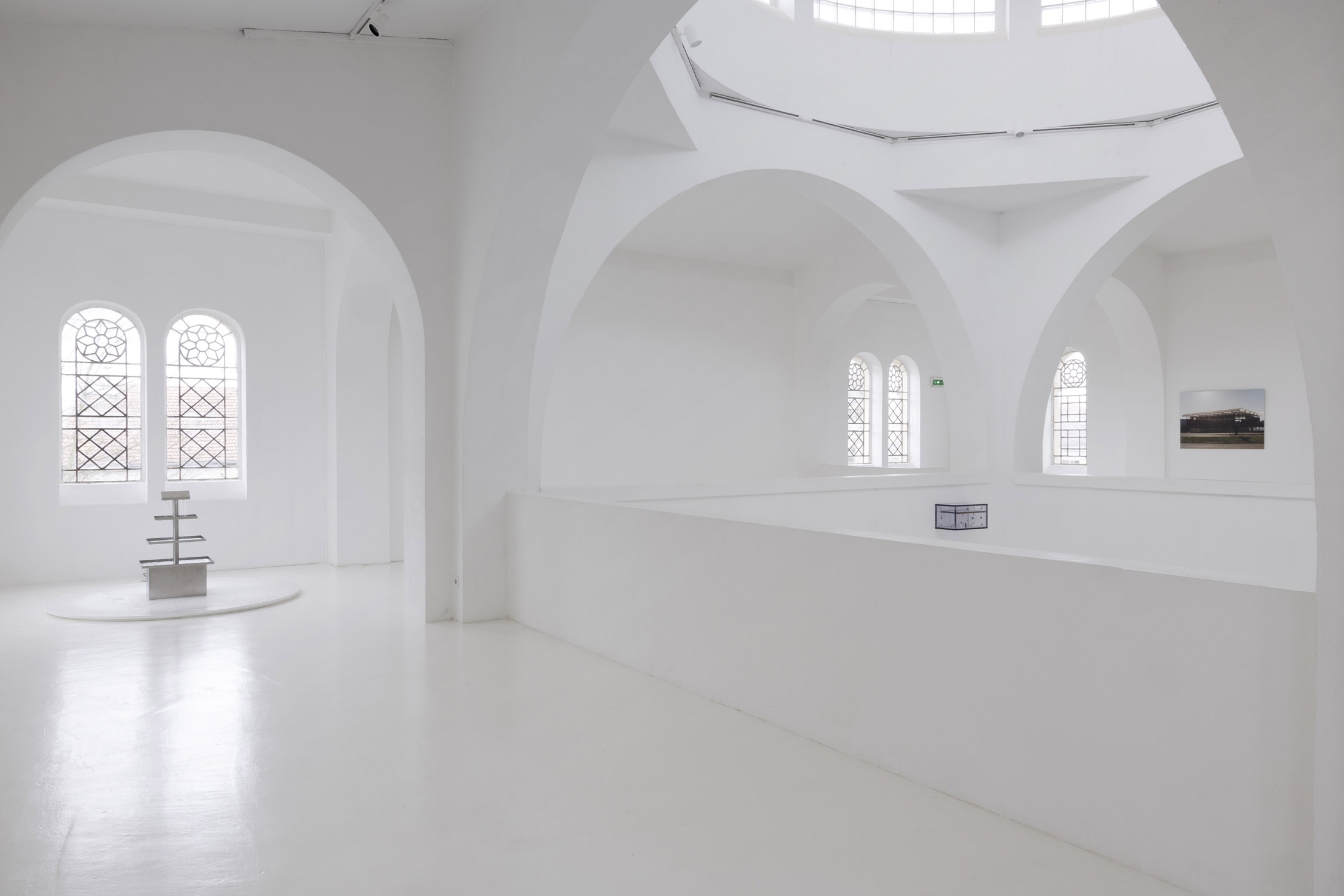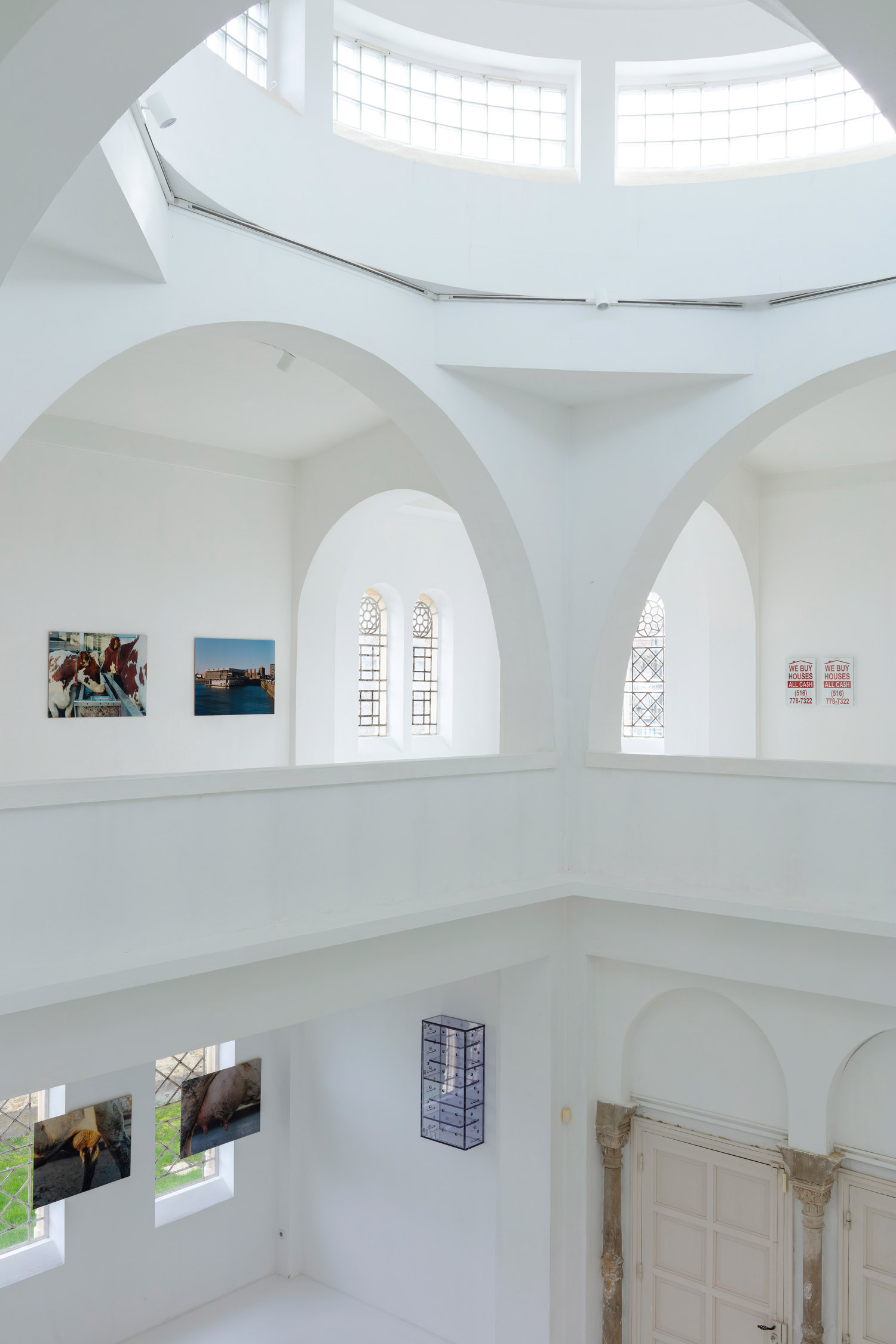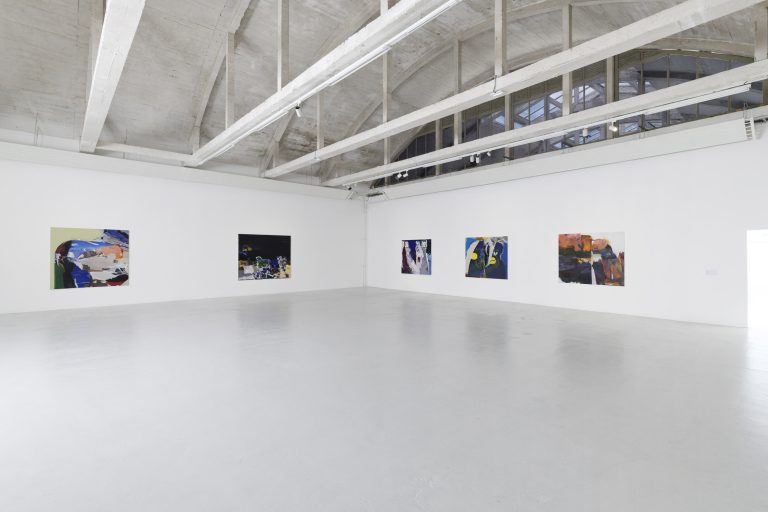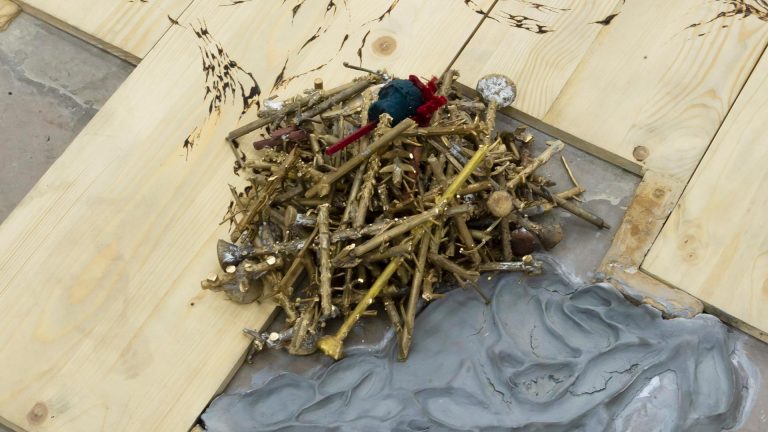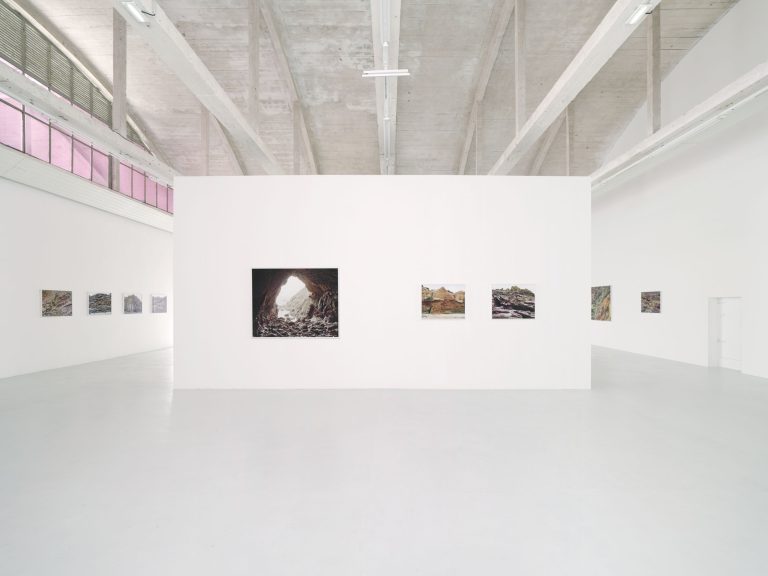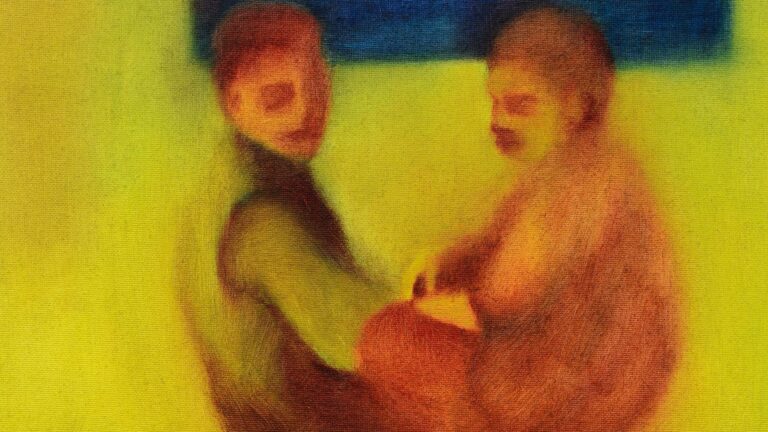Artist: Gina Folly
Exhibition title: The Simple Life
Venue: Centre d’art contemporain-la synagogue de Delme, Delme, France
Date: March 2 – June 9, 2024
Photography: all images copyright and courtesy of the artist and Centre d’art contemporain-la synagogue de Delme
Without defining itself through a preferred medium, Gina Folly’s art practice latches onto the details of human conditions of existence, observing contemporary social organization, the private and public constructions of individuals’ lives. The artist’s works explore questions such as how to house and feed oneself, how to live as a couple or exercise self-care, and so on. Social pressures, indirect injunctions through ruses such as manipulation, seduction within the everyday environment (advertising, legislation, religion or ethics) emerge as obvious to the artist within this environment. From these observations derive artforms that attempt to reflect these various kinds of interhuman relationships in their technical environment, with animals, consumer products, or standards of living.
Gina Folly’s art is situated on the crossroads between social, economic, political, interspecific, and environmental relationships. Whether artificial or authentic, they deal with these relationships horizontally, with a gentle, humorous and subtly critical approach, highlighting the need for kindness, tenderness and love among individuals. That is because these needs sometimes spiral into obsessions, into tragedy and drama, once caught up in the excesses and loss of bearings of our contemporary societies.
Gina Folly’s aesthetic vocabulary is quite simple, clear and minimalist. The systematic use of materials that are easily accessible in stores might even describe it as “poor”. But this sobriety has nothing to do with the principles of arte povera, given the extent to which the materials chosen by Gina Folly are typical of today’s post-industrial and post-Fordist world, representing the acceleration of the economy and of exchanges, the planetary distribution of products, globalization, and the energy necessary for survival. Nothing appears natural or spiritual (cardboard, metal, plexiglas, plastic, electricity) and everything evokes contemporary materiality in all of its most common and banal aspects. This aesthetic is “poor” in the sense that it is that of the packaging of things that must circulate quickly and far at low cost; that of affordable and practical kitset building metal; that of materials that are widely available and that also enable spontaneous construction of the do-it-yourself variety.
These aesthetic choices nevertheless overcome any cold impersonality through the artist’s sympathy for individual or collective emotion. Every subject or situation identified in lived experience by Gina Folly is treated through the prism of the emotional and sentimental human relations that it invites. Whether it be coded readymades, photographs or sculptural constructions whose materials reflect a certain kind of reality, all of her art aims to visualize the emotional motivations and moods that emanate from these: in other words, they visualize the way in which a society is emotionally constructed through the habits and practice of the productions it makes available. Gina Folly’s art does not speak of luxury and comfort, but of essential needs, domestic problems, of what concerns the lives of each and every person, in a rather neorealist vein, but without ever descending into pathos. Thanks to an ingenious dose of subtlety, she consistently infuses forms and discourse with healthy optimism regarding the difficulty of contemporary daily life – whether it be organizing oneself in life or presenting a contemporary art exhibition, good ideas, cooperation, and confidence can always save the day.
The domestication of animals by humans, for their consumption or issues of conservation of endangered species, involves coercive systems such as cages, imposed directions of traffic, collars and other means of control, which Gina Folly’s creations indirectly link to those that humanity imposes on itself. In the framework of her exhibition at the Contemporary Art Centre – La Synagogue de Delme – the artist focused on the case of a floating farm located in the port of Rotterdam1 on which dozens of cows live and graze. The first floating farm for producing cows’ milk, it is a structure designed to dock at city ports, to produce milk directly on site and avoid long circuits, thus providing
a viable solution to a lack of land in certain territories. A startling update of the Noah’s Ark story, this farm is self-sufficient and proposes a model that’s reproducible on a grand scale, for the future of agriculture. For the exhibition The Simple Life, the synagogue becomes both the receptacle and twin of this farm, recalling the past of the Jewish community of Delme (which, at one time, had to farm cattle, since they were forbidden from owning land) but also the architectural shape of the building is reminiscent of the floating farm, since it resembles a transparent cube. Here, we find photographs from inside the floating farm, documenting the daily life of the cows and the extraction of the milk. The images are printed onto wooden planks, like those of Ikea furniture®. The artist also presents here some transparent polycarbonate boxes, copies of the ones used at zoos to feed monkeys, which, in the artistic context, resemble strangely empty minimalist sculptures. They evoke both the transparency of the buildings of business districts and the unsettling atmosphere of a behavioral experience yet to come. At the heart of this exhibition, the artist questions these models of non-soil agriculture for the future, in their utopian dimension verging on the absurd (animals cut off from the land and from nature; the utopian vision of a model that would struggle to adapt to the population levels of modern cities – a contemporary Noah’s Ark or a new financial godsend?) with the vital distance that humor provides for a Swiss artist photographing dairy cows.
Gina Folly (Zurich, 1983) graduated from the Zurich University of the Arts. She lives and works between Basel and Paris.
Recent solo exhibitions include : Centre d’édition contemporaine, Geneva ; Kunstmuseum Basel | Gegenwart, Basel; Tonus, Paris; Kunsthaus Baselland, Basel; Hard Hat, Geneva; Ermes-Ermes, Rome and Vienna; Almanac, London.
A selection of group exhibitions include Emmanuel Layr, Vienna; Salts, Basel; Essener Kunstverein, Essen; Sgomento Zurigo, Zurich; Fondation Fiminco, Paris; Fondation Ricard, Paris; CAC-la synagogue de Delme; Kunsthalle Basel; Kölnischer Kunstverein, Cologne; Basement Roma, Rome; Kunsthaus Glarus; and the Swiss Institute, New York; amongst others.

